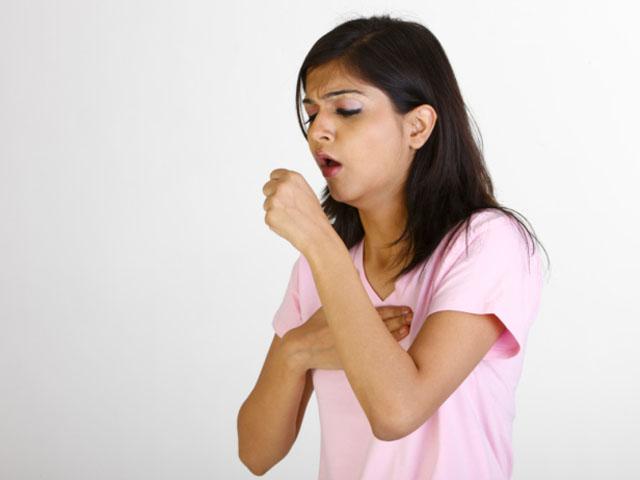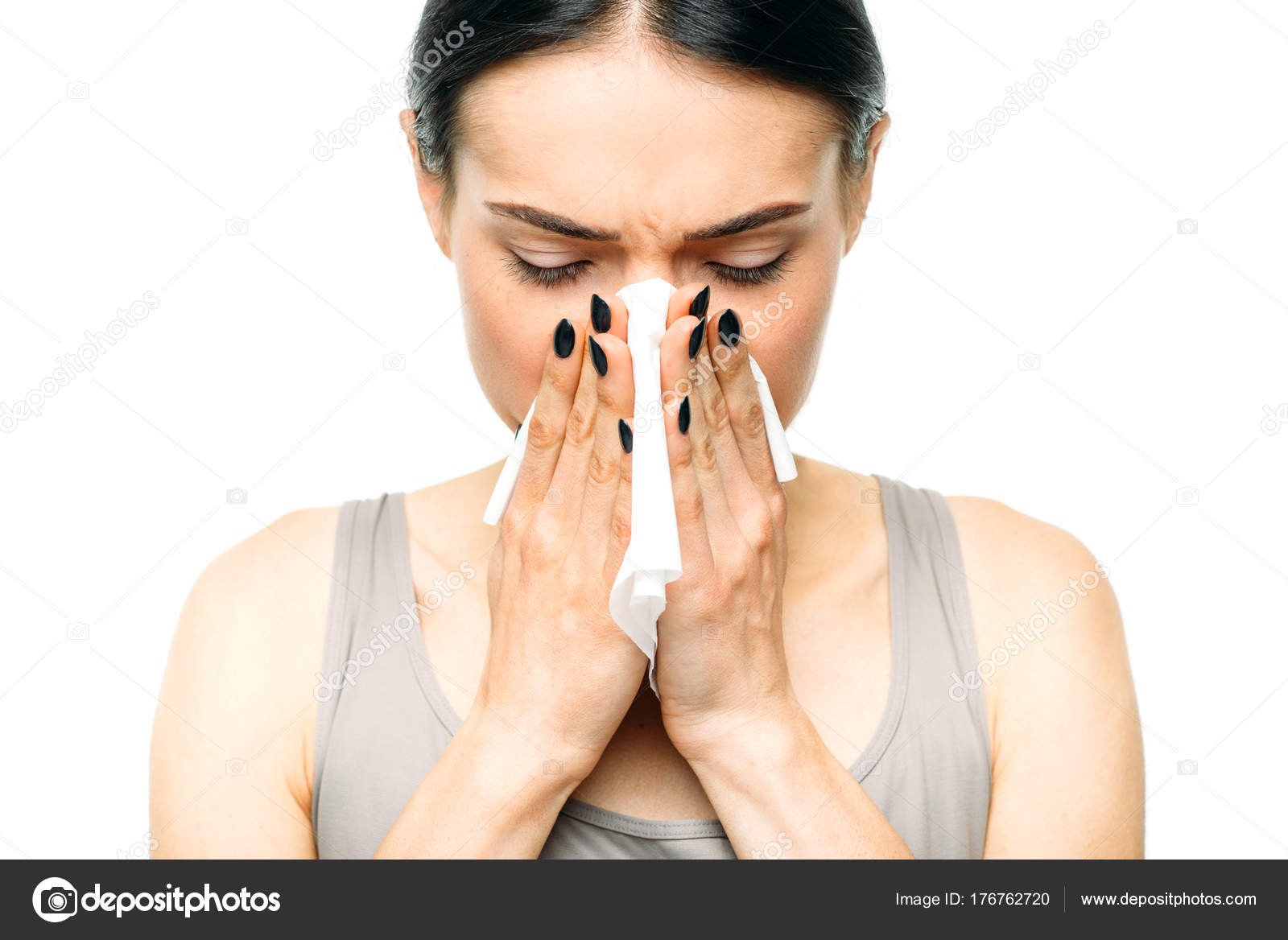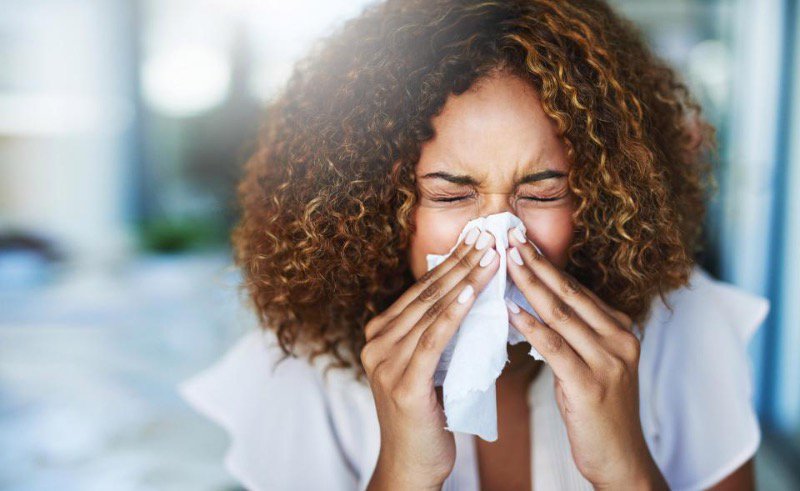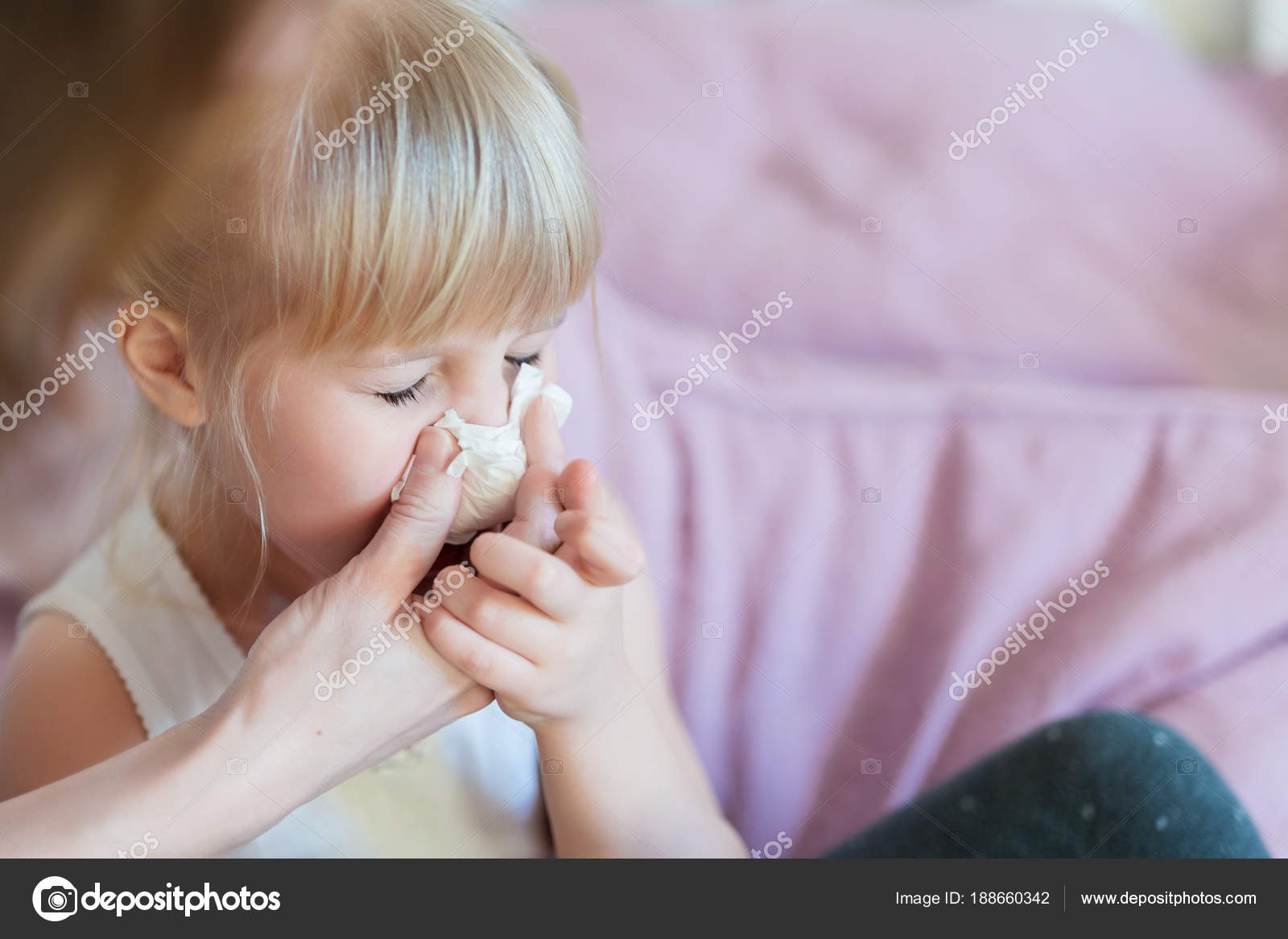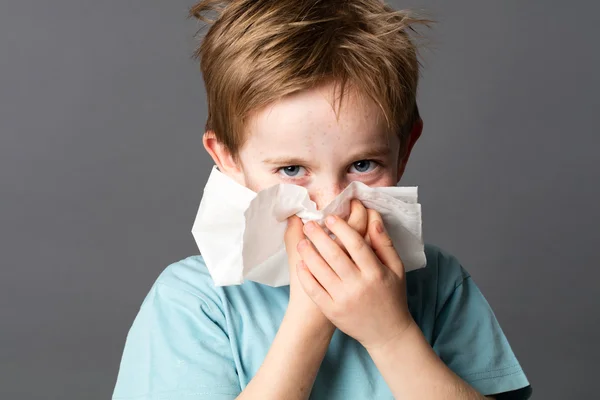Runny nose and body aches. Cold, Flu, or COVID-19: How to Identify Symptoms and Take Action
How can you tell the difference between a cold, flu, and COVID-19. What are the key symptoms to watch for. When should you get tested or see a doctor. How can you protect yourself and others during cold and flu season.
Key Differences Between Cold, Flu and COVID-19 Symptoms
Identifying whether you have a common cold, the flu, or COVID-19 can be challenging due to overlapping symptoms. However, there are some key differences to be aware of:
- Cold symptoms tend to be milder and rarely include fever or headache
- Flu symptoms often have a rapid onset and are typically more severe
- COVID-19 symptoms can develop gradually or suddenly
- Loss of taste or smell is more unique to COVID-19
Understanding these distinctions can help guide your response and treatment. However, testing is often necessary for a definitive diagnosis, especially to differentiate between flu and COVID-19.
Common Symptoms to Watch For
While symptoms can vary, here are some of the most common signs to look out for:

Cold Symptoms
- Runny or stuffy nose
- Sore throat
- Cough
- Congestion
- Slight body aches
- Mild fatigue
Flu Symptoms
- Fever or feeling feverish/chills
- Cough
- Sore throat
- Runny or stuffy nose
- Muscle or body aches
- Headaches
- Fatigue
COVID-19 Symptoms
- Fever or chills
- Cough
- Shortness of breath
- Fatigue
- Muscle or body aches
- Headache
- New loss of taste or smell
- Sore throat
- Congestion or runny nose
- Nausea or vomiting
- Diarrhea
Is fever always present with COVID-19? While fever is a common symptom, it’s not universal. Some people with COVID-19 may not experience fever, especially in mild cases or early stages of infection.
When to Get Tested for COVID-19
Given the potential for COVID-19 to spread rapidly, it’s crucial to know when to get tested. Consider getting a COVID-19 test if you experience:
- Fever or chills
- New cough
- New shortness of breath
- Two or more of the following: headache, new muscle aches, new upper respiratory symptoms, loss of taste or smell, nausea/vomiting/diarrhea, or new rash
Should you get tested even if you’re vaccinated? Yes, if you have symptoms or have been exposed to someone with COVID-19, you should still get tested even if you’re fully vaccinated. Breakthrough infections can occur, and testing helps prevent further spread.
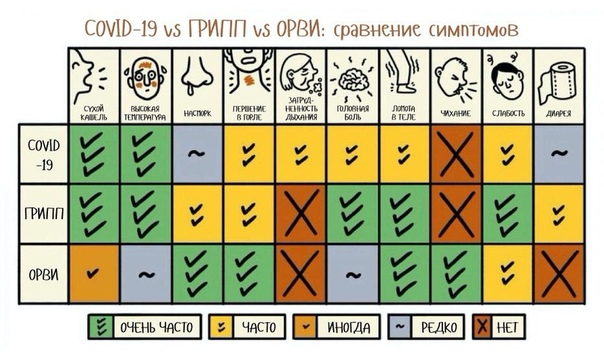
Seeking Medical Care: When to Call Your Doctor
While many cases of colds, flu, and even mild COVID-19 can be managed at home, there are times when you should seek medical attention:
- You have chronic medical conditions
- You’re over 65 years old
- You’re unvaccinated and at higher risk for severe COVID-19
- Your fever doesn’t respond to fever-reducing medication
- Your symptoms are severe or worsening over time
When should you go to the emergency room? Seek immediate medical care if you experience:
- Chest pain or pressure
- Confusion
- Difficulty breathing
- Blue discoloration of your lips or face
These symptoms could indicate a severe case of flu or COVID-19 requiring urgent medical intervention.
Prevention Strategies: Protecting Yourself and Others
Preventing the spread of respiratory illnesses is crucial, especially during cold and flu season. Here are some effective strategies:
- Get vaccinated against both flu and COVID-19
- Practice good hand hygiene
- Wear a mask in public indoor spaces
- Maintain social distancing
- Avoid large gatherings
- Stay home when you’re sick
How effective is the flu vaccine? While its effectiveness can vary year to year, the flu vaccine remains one of the best ways to protect yourself and reduce the severity of illness if you do get infected.

The Importance of Flu Vaccination During the COVID-19 Pandemic
Getting a flu shot is particularly crucial during the ongoing COVID-19 pandemic. Here’s why:
- Reduces the risk of a “twin pandemic” of flu and COVID-19
- Helps prevent overwhelming the healthcare system
- Lowers your risk of getting both flu and COVID-19 simultaneously
- Can be administered at the same time as a COVID-19 vaccine
When is the best time to get your flu shot? The Centers for Disease Control and Prevention recommend getting vaccinated before the end of October, but it’s never too late to get one during flu season.
Managing Symptoms at Home
If you’re experiencing mild symptoms of a cold, flu, or COVID-19, there are several steps you can take to manage your condition at home:
- Rest and get plenty of sleep
- Stay hydrated by drinking plenty of fluids
- Use over-the-counter pain relievers to reduce fever and alleviate aches
- Use a humidifier to ease congestion
- Gargle with salt water to soothe a sore throat
- Use nasal saline drops or sprays for congestion
Can over-the-counter medications help with COVID-19 symptoms? While they can help manage symptoms, there’s no evidence that OTC medications can cure or prevent COVID-19. Always consult with a healthcare provider before starting any new medication regimen.
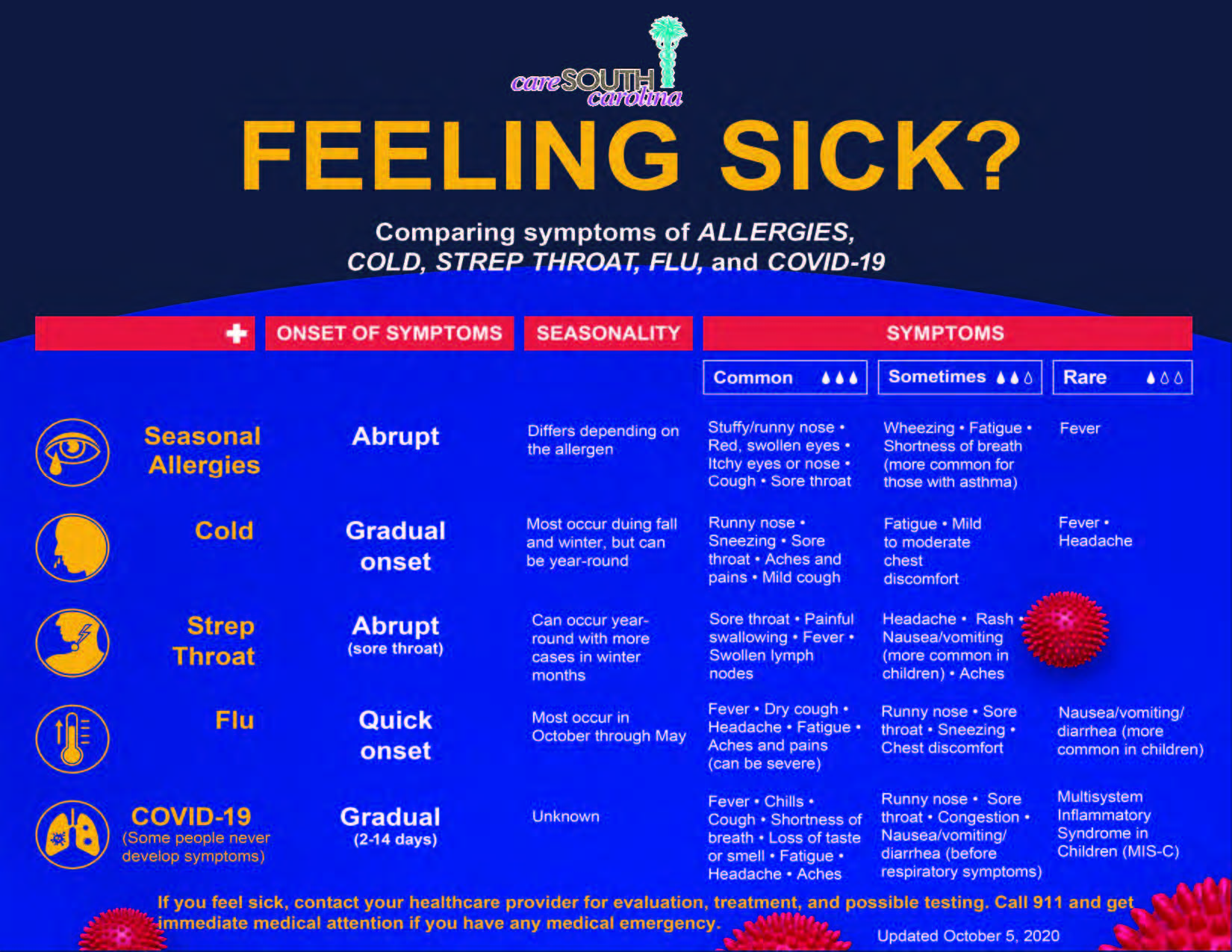
The Role of Testing in Diagnosis and Treatment
Accurate diagnosis through testing plays a crucial role in managing respiratory illnesses, especially when it comes to distinguishing between flu and COVID-19. Here’s why testing is important:
- Guides appropriate treatment decisions
- Helps prevent transmission by identifying infectious individuals
- Informs public health measures and tracking of disease spread
- Allows for timely administration of antiviral medications for flu
What types of tests are available for flu and COVID-19? There are several types of tests available, including rapid antigen tests and PCR tests. Your healthcare provider can recommend the most appropriate test based on your symptoms and circumstances.
When to Seek Testing
Consider getting tested if you:
- Have symptoms consistent with flu or COVID-19
- Have been in close contact with someone who has tested positive for COVID-19
- Are advised to get tested by your healthcare provider or local health department
- Are planning to attend a large gathering or travel
Remember, even if you’re fully vaccinated, you should still get tested if you develop symptoms or have been exposed to someone with COVID-19.

Long-Term Effects and Complications
While most people recover fully from colds, flu, and even COVID-19, it’s important to be aware of potential long-term effects and complications:
Cold Complications
- Sinus infections
- Middle ear infections
- Asthma exacerbations
Flu Complications
- Pneumonia
- Myocarditis (inflammation of the heart)
- Encephalitis (inflammation of the brain)
- Muscle tissue breakdown
- Multi-organ failure
COVID-19 Long-Term Effects
- Fatigue
- Shortness of breath
- Cognitive issues (“brain fog”)
- Joint and muscle pain
- Loss of taste or smell
- Depression or anxiety
How long can these effects last? While most people recover within weeks, some individuals experience symptoms for months after the initial infection, a condition known as “long COVID” or “post-acute sequelae of SARS-CoV-2 infection” (PASC).
The Impact of Seasonal Changes on Respiratory Illnesses
Seasonal changes can significantly influence the prevalence and transmission of respiratory illnesses. Understanding these patterns can help in prevention and preparation:
:max_bytes(150000):strip_icc()/cold-flu-overview-4014743-v1-f93d7d64c58d4393a0f6c2ce5a3fa1a2.png)
Cold and Flu Season
- Typically peaks during fall and winter months
- Lower humidity allows viruses to survive longer in the air
- People spend more time indoors, increasing close contact
- Cold temperatures may weaken the immune system
COVID-19 Seasonality
- Still being studied, but may show similar patterns to other respiratory viruses
- Potential for increased transmission during colder months
- Importance of maintaining preventive measures year-round
How can you prepare for cold and flu season? Start by getting vaccinated early, stock up on necessary supplies like tissues and hand sanitizer, and maintain healthy habits to boost your immune system.
Year-Round Prevention
While respiratory illnesses may be more common during certain seasons, it’s crucial to maintain preventive measures throughout the year:
- Practice good hand hygiene
- Stay home when you’re sick
- Keep your living and working spaces clean and well-ventilated
- Maintain a healthy lifestyle with proper nutrition, exercise, and sleep
The Role of Immunity in Fighting Respiratory Illnesses
Your immune system plays a crucial role in protecting you against respiratory illnesses. Understanding how immunity works can help you take steps to strengthen your body’s defenses:

Types of Immunity
- Innate Immunity: Your body’s first line of defense against pathogens
- Adaptive Immunity: Develops after exposure to a specific pathogen or through vaccination
Factors Affecting Immunity
- Age
- Nutrition
- Sleep
- Stress levels
- Chronic health conditions
How can you boost your immune system? While there’s no magic bullet for boosting immunity, maintaining a healthy lifestyle can help support your immune function. This includes eating a balanced diet, getting regular exercise, managing stress, and getting adequate sleep.
Vaccines and Immunity
Vaccines play a crucial role in building immunity against specific pathogens. They work by:
- Introducing a harmless form of the pathogen to your immune system
- Stimulating your body to produce antibodies
- Creating immune memory for faster response to future infections
Getting vaccinated against flu and COVID-19 can significantly reduce your risk of severe illness and complications.
The Future of Respiratory Illness Management
As we continue to navigate the challenges posed by respiratory illnesses, including the ongoing COVID-19 pandemic, several developments are shaping the future of disease management and prevention:

Advancements in Vaccine Technology
- mRNA vaccines: Potential for faster development and adaptation to new strains
- Universal flu vaccines: Research into vaccines that could provide broader, longer-lasting protection
- Combination vaccines: Potential for single vaccines targeting multiple respiratory viruses
Improved Diagnostic Tools
- Rapid, multiplex tests: Capable of detecting multiple respiratory pathogens simultaneously
- At-home testing: Increasing accessibility and speed of diagnosis
- AI-assisted diagnosis: Potential for more accurate and efficient disease identification
Enhanced Treatment Options
- Antiviral medications: Development of new drugs to treat viral respiratory infections
- Immunomodulatory therapies: Treatments that help regulate the immune response
- Personalized medicine: Tailoring treatments based on individual genetic and health factors
How might these advancements change our approach to respiratory illnesses? These developments could lead to more precise diagnoses, more effective treatments, and better prevention strategies, potentially reducing the impact of seasonal respiratory illnesses and improving our ability to respond to future pandemics.
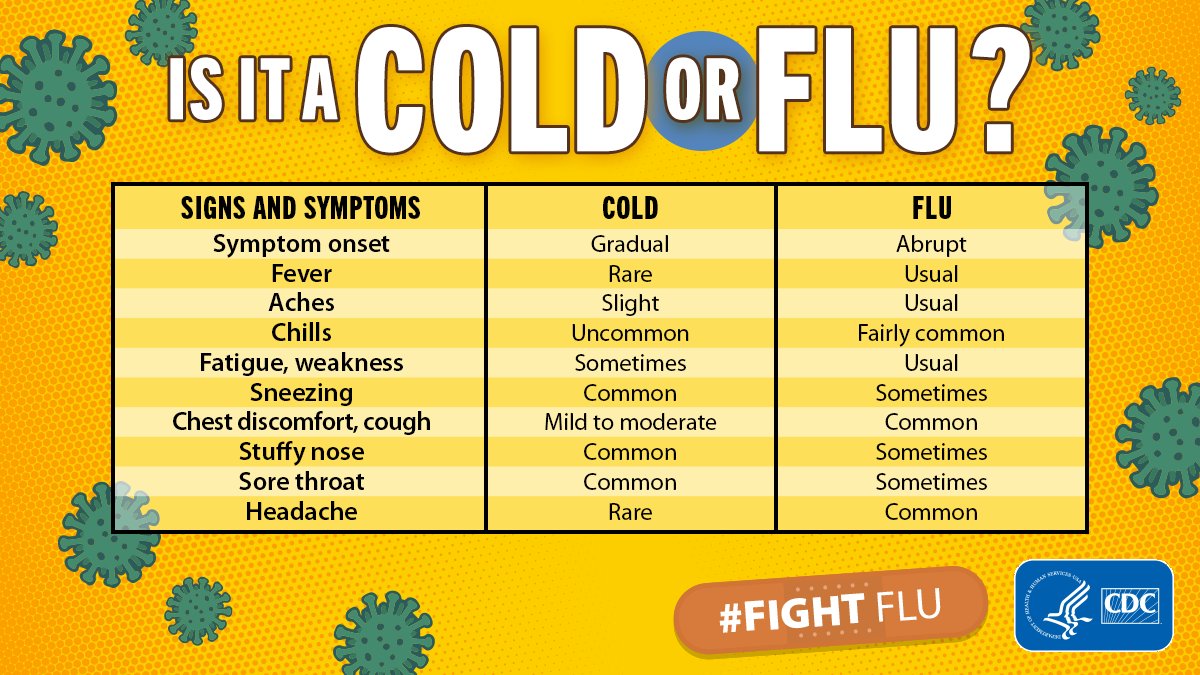
Public Health Strategies
The COVID-19 pandemic has highlighted the importance of robust public health measures. Future strategies may include:
- Enhanced surveillance systems for early detection of outbreaks
- Improved global cooperation in disease monitoring and response
- Integration of digital health technologies for better tracking and management of diseases
- Increased focus on health equity and addressing disparities in healthcare access
As we move forward, staying informed about these developments and continuing to practice preventive measures will be crucial in managing respiratory illnesses and protecting public health.
Cold, Flu or COVID-19? Here’s How to Tell the Difference
This article was updated on September 16, 2021.
You wake up one morning feeling under the weather. While in previous years you may have chalked up a sore throat or body aches to a run-of-the-mill cold or flu, the ongoing COVID-19 pandemic adds a new element of concern to getting sick.
“There is significant overlap between symptoms of influenza and COVID,” said Laraine Washer, medical director of infection prevention and epidemiology at Michigan Medicine. “Both can present with fevers, chills, cough, muscle/body aches, fatigue and headache.” Here, Washer offers advice to follow during this unique cold and flu season.
Is it a cold, the flu or COVID?
Cold symptoms are mild and the common cold tends not to be associated with fever or headache.
Congestion/runny nose is common for the common cold and would be uncommon to be the only symptom for influenza. Congestion/runny nose can be a symptom of a COVID infection and might be the only symptom in mild cases.
SEE ALSO: Seeking Medical Care During COVID-19
Flu symptoms are often of rapid onset. COVID symptoms can be of rapid or more gradual onset.
Says Washer, one symptom that is more unique to a COVID infection is the loss of taste or smell. And symptoms from the delta variant are similar to prior versions of COVID.
Should I get a test?
Washer says that in many settings, the only way to tell the difference between COVID and influenza is by testing. “The differentiation can be very important as there are isolation requirements to prevent transmission of COVID and antivirals that can be used for influenza,” she explained.
If you have fever/chills, new cough or new shortness of breath, you should stay home and arrange to be tested for COVID.
If you have two or more of the following symptoms:
headache,
new muscle aches,
new upper respiratory symptoms (congestions, runny nose, sore throat),
new loss of taste or smell, new nausea/vomiting/diarrhea,
or new rash,
you should consider COVID testing, even if you’ve been vaccinated.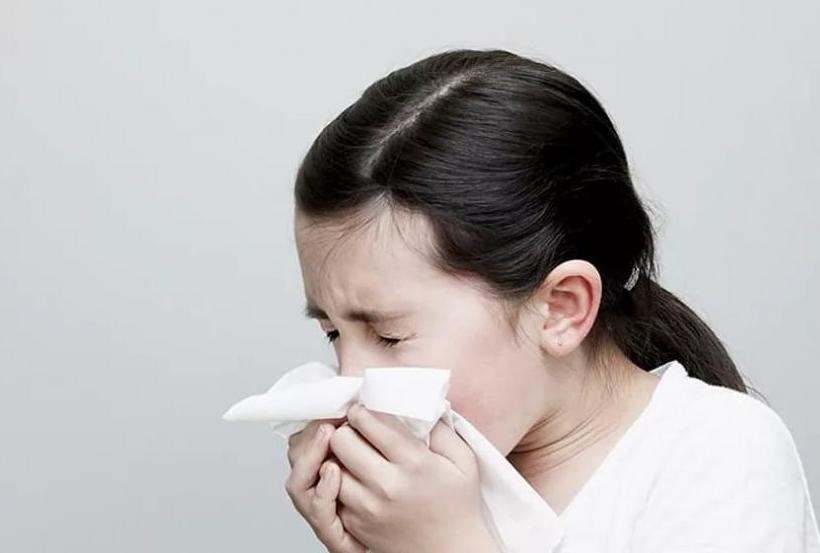 If you have had a known close contact exposure to someone with COVID, you should be tested even if you have one mild symptom. If you are a Michigan Medicine patient, you can call the COVID hotline (734-763-6336). There is a low threshold for COVID testing given risk of transmission to others. Once influenza season begins, your doctor may also wish to test you for flu.
If you have had a known close contact exposure to someone with COVID, you should be tested even if you have one mild symptom. If you are a Michigan Medicine patient, you can call the COVID hotline (734-763-6336). There is a low threshold for COVID testing given risk of transmission to others. Once influenza season begins, your doctor may also wish to test you for flu.
Should I call the doctor?
If you have any chronic medical conditions, are over the age of 65, or are not vaccinated, you are at higher risk of getting a severe COVID infection and should call your doctor. Call your doctor for a fever that does not go down with fever reducing medicine (do not use aspirin as it is contraindicated in influenza) or any severe symptoms or symptoms that get worse over time.
MORE FROM THE LAB: Subscribe to our weekly newsletter
Should I go to the emergency room?
Go the emergency department if you have chest pain or pressure, confusion, difficulty breathing or blue discoloration to your lips or face.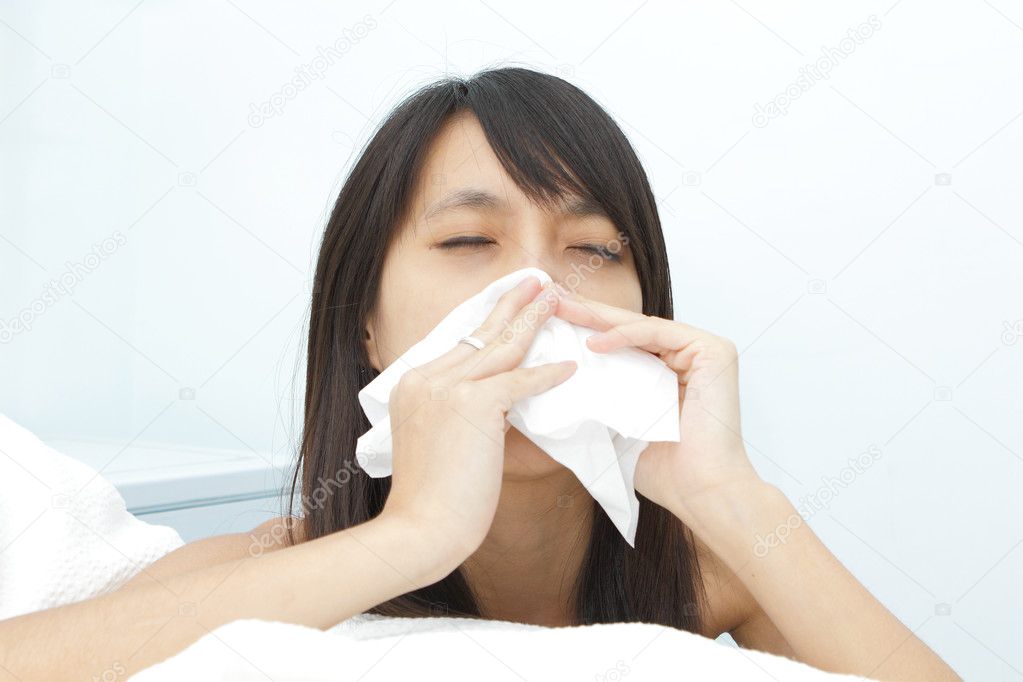
And while social distancing and masking reduced flu last year, that may not be the case this year.
Last year, “flu and other respiratory illnesses were reduced in the Southern Hemisphere, whose flu season typically stretches from May to November,” said Washer. However, there is already a moderate to high level of influenza circulating in some U.S. states, so there will likely be significantly more cases of the flu this winter compared to last year.
The flu shot and COVID vaccine
Getting a flu shot this year is particularly important to reduce the potential for a twin pandemic of influenza and COVID, which could further overwhelm the healthcare system. The flu vaccine has been updated this year to better match circulating strains. The Centers for Disease Control and Prevention recommend that you get the flu shot before the end of October, but it’s never too late to get one. Plus, if you haven’t gotten your COVID vaccine yet, you can get one at the same time as your flu shot.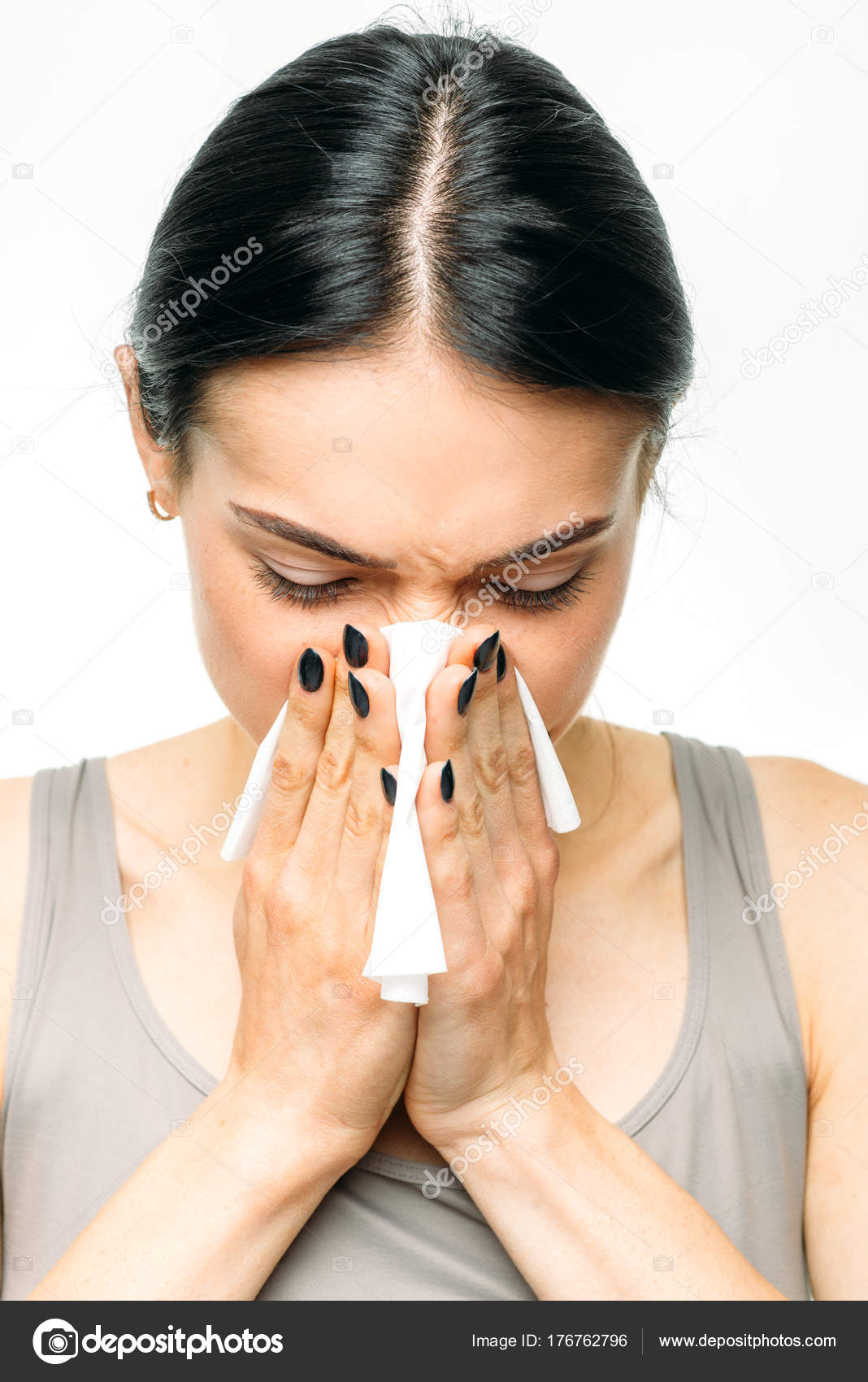
Added Dr. Washer, “Continue to social distance, avoid large gatherings and wear your mask! And get and use a thermometer.”
Is It A Cold, Flu, Allergies or COVID-19?
We’ve all been there. You wake up with a sore throat, then come the aches and the congestion that feels like it may cause your head to explode.
Is it a cold or allergies? Or something worse, like the flu — or even COVID-19? Should you see your healthcare provider, or just stay home and get rest?
“While a cold and the flu have similar symptoms, the flu is much more severe and can result in serious health problems,” says Dr. Richard Martin, a family medicine physician at Geisinger Mt. Pleasant in Scranton. “Add allergies and COVID-19, and it can be even more complex to know whether you should call your doctor or get a COVID test.”
Let’s take a look at how to spot the difference and get you on the road to recovery ASAP.
What are the symptoms of a cold?
Cold symptoms come on gradually and are milder than symptoms of the flu. Symptoms commonly include:
Symptoms commonly include:
- Cough
- Mild fever (more common in children)
- Runny nose
- Sneezing
- Sore throat
- Stuffy nose
Cold symptoms typically last for about a week. However, you’re contagious during the first few days, so stay home, get plenty of fluids and be sure to rest.
“Most colds are caused by a virus, which antibiotics won’t treat. It’s best to get plenty of rest, fluids and use over-the-counter medicines to help manage symptoms,” says Dr. Martin.
If your symptoms last longer than a week, check with your healthcare provider to rule out an allergy or bacterial infection.
What are the symptoms of flu?
Flu symptoms are often severe and come on quickly. If you have a fever and body or muscle aches right away, you may have the flu virus. Symptoms commonly include:
- Aches
- Chest discomfort, cough
- Chills
- Extreme tiredness/fatigue
- Headache
- High fever
- Sometimes nausea and diarrhea
Most symptoms improve over the course of a few days, but you’ll likely feel run down for a week or two.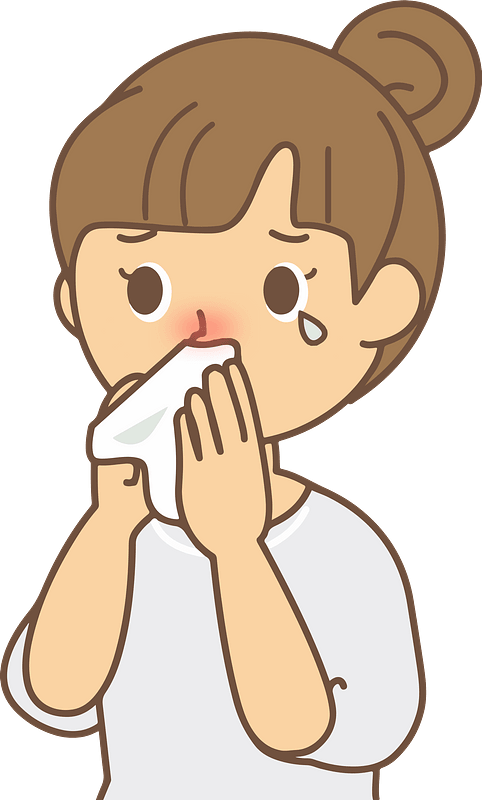 The flu is caused by the influenza virus, which leaves you contagious for a few days, so it’s important to stay home and rest.
The flu is caused by the influenza virus, which leaves you contagious for a few days, so it’s important to stay home and rest.
If you suspect you or a loved one have the flu, be aware of your risk of developing serious health issues. “The flu can lead to serious health problems like pneumonia, especially in people who are young, elderly or have heart or lung problems,” says Dr. Martin.
As with the common cold, antibiotics won’t help your flu symptoms, but getting rest, fluids and using over-the-counter medicines can help ease your symptoms.
Your healthcare provider may prescribe an antiviral medication, which can help you feel better sooner and may prevent complications like pneumonia.
What are the symptoms of allergies?
Allergy symptoms range in severity from person to person, can be stronger at certain times of the year and aren’t contagious.
“For example, someone who suffers from allergies may have their worst symptoms during the summer months, when it’s hotter and plants and grasses pollinate,” says Dr. Martin. They can also be caused by normal things in your environment — think pollen, dust, pet dander and mold.
Martin. They can also be caused by normal things in your environment — think pollen, dust, pet dander and mold.
Allergy symptoms can include:
- Sneezing
- Itchy or watery eyes
- Itchy nose, ears or throat
- Cough or a tickle in the throat
- Stuffy or runny nose
- Hives
- Swelling
While allergies can be treated at home with over-the-counter or prescription antihistamines, decongestants and nasal steroid sprays, some allergies may require special treatment from your doctor.
If you think you may be suffering from allergies, talk with your doctor about your symptoms and the best treatments to help you manage them.
What are the symptoms of COVID-19?
Like the flu, COVID-19 is a respiratory illness, but it’s caused by a different virus. Symptoms of COVID-19 can range from mild to severe, and may include:
- Fever or chills
- Cough
- Shortness of breath or difficulty breathing
- Fatigue
- Muscle or body aches
- Headache
- New loss of taste or smell
- Sore throat
- Congestion or runny nose
- Nausea or vomiting
- Diarrhea
Like most respiratory viruses, COVID-19 can be spread person-to-person through respiratory droplets produced when an infected person coughs or sneezes.
“That’s why it’s important to take the recommended measures to protect yourself and others by getting vaccinated, washing your hands, avoiding touching your face and staying home if you’re sick,” says Dr. Martin.
If you have respiratory symptoms, screen yourself. Based on your results, you can schedule a COVID test (if you have a myGeisinger account, you can self-schedule your test here). If you test positive, call your doctor.
“It’s important to identify positive cases of COVID, so that we can take proactive measures in protecting our communities,” says Dr. Martin.
How to prevent a cold, flu and COVID-19
For most people, having a cold, the flu or COVID doesn’t require a trip to the emergency room. Most symptoms resolve after some much-needed rest, but that isn’t always the case.
To decrease your chances of catching a cold, flu or COVID, remember to wash your hands frequently. Washing with warm, soapy water for at least 20 seconds (sing the “happy birthday” song twice) can help get rid of the germs on your skin.
Avoid contact with people who are sick. And if you become sick, stay home to keep from infecting others.“Remember, the best way to prevent the flu and COVID-19 is by getting vaccinated,” says
Dr. Martin. The symptoms may be similar and having both viruses at one is possible. This is something you’ll want to avoid, especially older adults, young children and those with certain medical conditions.
Next steps:
Is the COVID vaccine safe?
Got the flu? Here’s what to do.
Think your child has an ear infection?
Common cold – HSE.ie
Symptoms of a cold
The first symptom of a cold is usually a sore throat. This is generally followed by sneezing or a blocked, sore or runny nose. Usually, 1 in 3 people with a cold will get a cough and feel unwell.
Colds are caused by viruses. Antibiotics cannot treat viruses. Instead, drink plenty of liquids to replace those lost from sweating and runny noses. Get lots of rest and eat healthily.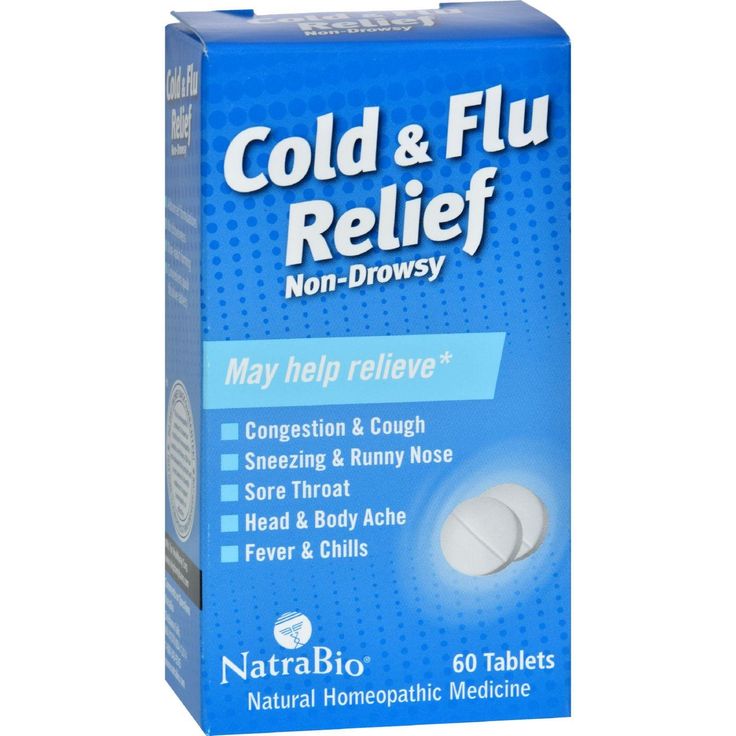 Do not ask your GP for antibiotics for a cold.
Do not ask your GP for antibiotics for a cold.
You will usually feel worse during the first 2 to 3 days before gradually starting to improve. Your symptoms will usually last about a week.
Cold and flu symptoms are similar but flu tends to be more severe.
Cold
- Appears gradually
- Affects mainly your nose and throat
- Makes you feel unwell but you’re OK to carry on as normal – for example, go to work
Flu
- Appears quickly within a few hours
- Affects more than just your nose and throat
- Makes you feel exhausted and too unwell to carry on as normal
Cold symptoms can include:
- blocked or runny nose
- sore throat
- headaches
- muscle aches
- coughs
- sneezing
- a raised temperature
- pressure in your ears and face
- loss of taste and smell
The symptoms are the same in adults and children. Sometimes, symptoms last longer in children.
Causes of colds
Colds are caused by viruses. They can easily spread to other people. You’re infectious until all your symptoms have gone. This usually takes about a week.
Colds are spread by germs from coughs and sneezes which can live on hands and surfaces for 24 hours.
To reduce the risk of spreading a cold you should:
- wash your hands often with warm water and soap
- cough into your elbow to stop germs getting on to your hands and spreading to other people
- use tissues to trap germs when you cough or sneeze
- bin used tissues as quickly as possible
How to prevent catching a cold
The best ways to avoid catching a cold are:
- washing your hands with warm water and soap, especially before eating
- not sharing towels or household items, like cups, with someone who has a cold
- not touching your eyes or nose. You can infect your body if you’ve come into contact with the virus.
- staying fit and healthy
Information:
The flu vaccine helps prevent flu but not colds.
How to wash your hands correctly
Treatment
Most colds can be treated at home. They will get better by themselves without any specific treatment. Drink plenty of liquids, get lots of rest and eat healthily. Resume your normal activities when you feel well enough.
Talk to your pharmacist about products and medications that will help. Paracetamol or ibuprofen will relieve pain or a fever. Nasal saline sprays will help to clear a blocked nose. Over-the-counter throat sprays, lozenges and cough remedies may also help.
Be careful taking cough and cold medicines if you’re also taking paracetamol and ibuprofen tablets. This is because it’s easy to take more than the recommended dose.
Some medicines are not suitable for children, babies and pregnant women. Check with your pharmacist.
There’s little evidence that supplements such as vitamin c, zinc, echinacea or garlic prevent colds or speed up recovery.
Only see a GP if :
- your symptoms don’t improve after 3 weeks
- you’re finding it hard to breathe or develop chest pain
- your symptoms get suddenly worse
- your temperature is very high or you feel hot and shivery
- you’re concerned about your child’s symptoms
- you have a long-term medical condition – for example, diabetes, or a heart, lung, kidney or neurological disease
- you have a weak immune system – for example, if you have diabetes or you’re having chemotherapy
Antibiotics
Antibiotics won’t relieve your symptoms or speed up your recovery.
Antibiotics are only effective against bacterial infections. Colds are caused by viruses.
How do COVID-19 Symptoms Differ from Those Caused by Seasonal Allergies, Colds, and the Flu?: Prima Medicine: Internal Medicine
It can be nerve-wracking to know there’s a new kind of bug going around, and we’re not exactly sure how it’s spread. Every sneeze, tickle in the throat, or muscle ache can make you wonder, “Do I have coronavirus?”
The medical teams at Prima Medicine, with locations in Washington, D.C., and Fairfax and South Riding, Virginia, are committed to serving the local community. We’ve prepared this brief on COVID-19 using information from the latest authoritative sources, to help you discern your symptoms and understand what is and is not a cause for alarm.
Top COVID-19 symptoms
According to the World Health Organization (WHO), while not all people will present in exactly the same way, there are a few key symptoms that appear in most patients infected with the coronavirus.
- Nearly 90% of patients have a high fever.
- Nearly 70% of patients have a dry cough.
- Nearly 40% of patients have fatigue.
- Nearly 20% of patients have shortness of breath.
Some patients may cough up phlegm; experience headaches, muscle, and/or joint pain; have nasal or eye congestion, or suffer from nausea or diarrhea. However, if you have one or more of these symptoms but not the top symptoms of COVID-19, you may simply have seasonal allergies, a cold, or the flu.
Seasonal allergy symptoms
Seasonal allergies usually present with one or more of the following allergy symptoms:
- Watery or itchy eyes
- Nasal itching, congestion, or a runny nose
- Sneezing and/or post-nasal drip
- Itchy sinuses (nose and/or throat)
- Itchy ear canals and/or ear congestion and pressure
If you have severe allergies or asthma, you could also experience headaches, coughing, wheezing, and shortness of breath. Already having respiratory issues can make COVID-19 more dangerous to you, so practice good hygiene and try to avoid exposure.
Already having respiratory issues can make COVID-19 more dangerous to you, so practice good hygiene and try to avoid exposure.
Common cold symptoms
If you have a common cold, you may be experiencing one or more of these cold symptoms:
- Stuffy nose, runny nose, and/or sneezing
- Cough, sore throat, and/or congestion
- Mild headache or body aches
- Low-grade fever
- General feeling of being unwell (malaise)
If your fever climbs, or if you start having shortness of breath, your cold may have developed into something more serious. You could have also been exposed to COVID-19, but you should only be worried if you are in a high-risk category (advanced in age, with existing respiratory problems, or with a compromised immune system.)
Flu symptoms
The flu is the main illness that can present with symptoms the most similar to top COVID-19 symptoms. Flu symptoms include:
- Possible fever
- Chills
- Sore throat
- Stuffy or runny nose
- Muscle or body aches or headaches
- Fatigue
The big COVID-19 symptom missing from the flu symptom list is a dry cough. However, it is possible to have one or the other and have different symptoms than the most common ones.
However, it is possible to have one or the other and have different symptoms than the most common ones.
If you are worried you have COVID-19
The CDC has the following instructions if you think you may have COVID-19:
Call your doctor if you develop the following symptoms:
- Fever
- Cough
- Shortness of breath
AND
- You’ve been in close contact with someone known to have COVID-19 OR
- You live in or have recently traveled from an area experiencing an outbreak of COVID-19.
Call ahead before you go to a doctor’s office or emergency room, and tell them about your symptoms and any recent travel or contact with travelers or people with confirmed cases. You don’t want to expose others unnecessarily.
The entire team at Prima Medicine is here for you during this challenging time. If you need an appointment, call us at or contact us online.
Cold and Flu – familydoctor.org
Diagnosis
You may have STREP THROAT, an infection caused by bacteria.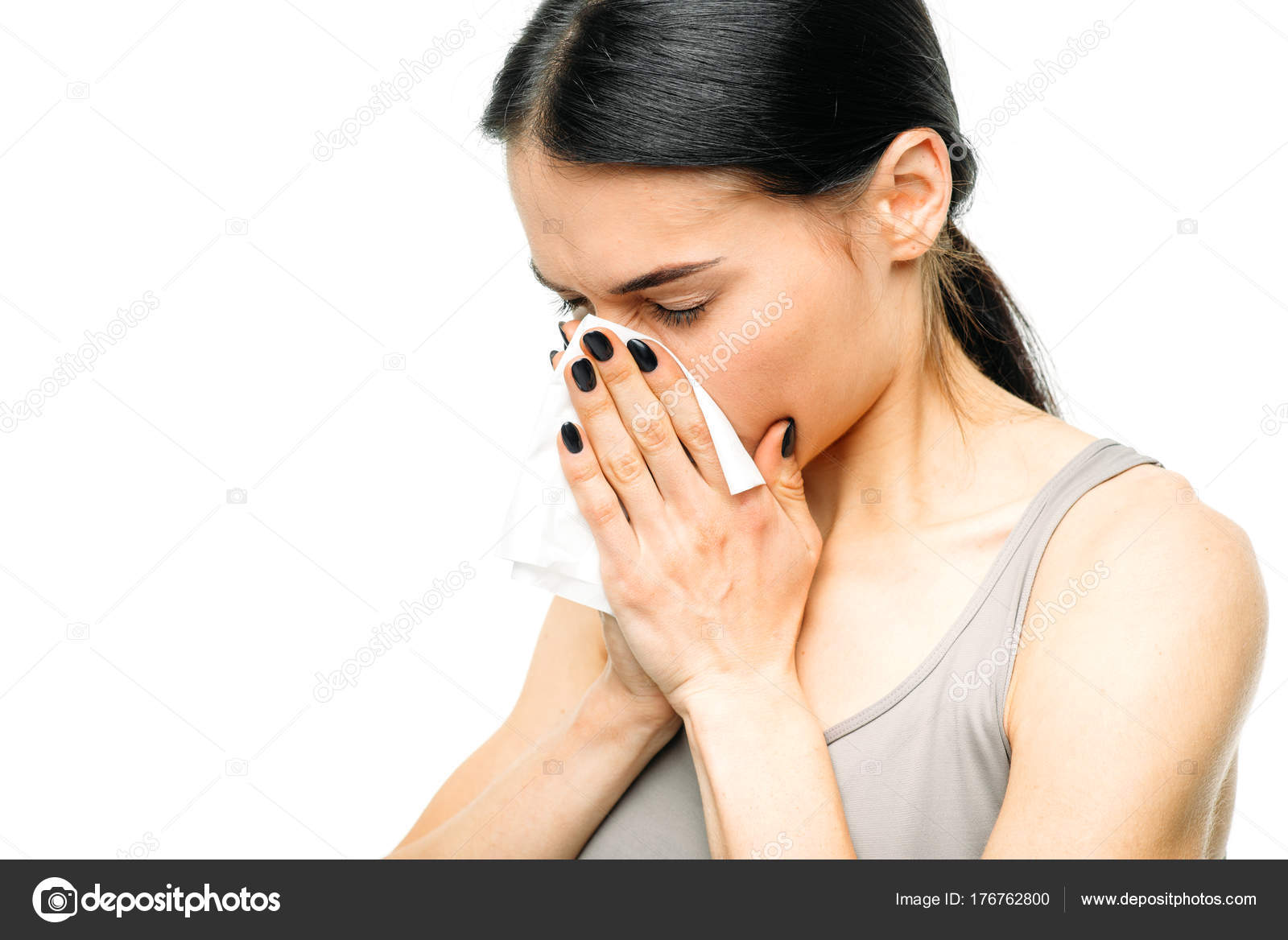
Self Care
See your doctor if your sore throat or fever lasts longer than 48 hours. He or she can do a test to find out if you have strep throat. If you do, your doctor may give you an antibiotic to treat it.
You should also get plenty of rest and drink lots of water. Gargling with warm salt water (1/4 teaspoon of salt in 1 cup [8 ounces] of warm water) may help relieve your sore throat.
Diagnosis
You may have a viral infection, possibly INFLUENZA (also known as the FLU).
Self Care
If you see your doctor within 48 hours of the start of your symptoms, he or she may prescribe an antiviral medicine to shorten the course of the flu.
Get plenty of rest and drink lots of fluids. Over-the-counter (OTC) cough and cold medicines may relieve some of your symptoms. Don’t give OTC cough and cold medicines to a child younger than 4 years of age unless your child’s doctor says it’s okay.
Remember, you can prevent the flu by getting a flu shot each fall.
Diagnosis
You may have ACUTE BRONCHITIS, an inflammation of the airways that is most often caused by a viral infection.
Self Care
Get plenty of rest and drink lots of fluids. Using a cool-mist humidifier may also relieve some of your symptoms. If you smoke, quitting is the best way to help your airways heal faster.
Antibiotics do not work against the viruses that cause most cases of acute bronchitis. An over-the-counter (OTC) medicine can reduce inflammation, ease pain, and lower your fever. An expectorant (medicine that thins mucus) can help your cough clear mucus from your airways. Don’t give over-the-counter (OTC) cough and cold medicines to a child younger than 4 years of age unless your child’s doctor says it’s okay.
If you are wheezing, you might need inhaled medicine. Your doctor will decide if this treatment is right for you.
If your symptoms persist or get worse, contact your doctor. If you are having trouble breathing at rest or with light activity, go directly to the nearest emergency room (by ambulance, if necessary).
Diagnosis
You may have viral GASTROENTERITIS. Many people call it the STOMACH FLU, but it is not the same as influenza.
Self Care
Get plenty of rest and stay hydrated. Ease back into eating with bland foods and clear liquids.
Children who have gastroenteritis should be given an oral rehydration solution (ORS) to avoid dehydration.
Diagnosis
You may have ALLERGIC RHINITIS, an allergic reaction to triggers such as tree, grass, or weed pollen; animal dander from cats and dogs; mold; and dust mites.
Self Care
Try an over-the-counter (OTC) antihistamine medicine or an OTC nasal steroid spray. If your symptoms are getting worse or are hard to control, contact your doctor.
Diagnosis
You probably have a viral infection, commonly called a COLD.
Self Care
Antibiotics do not work against the viruses that cause colds.
Get plenty of rest and drink lots of fluids.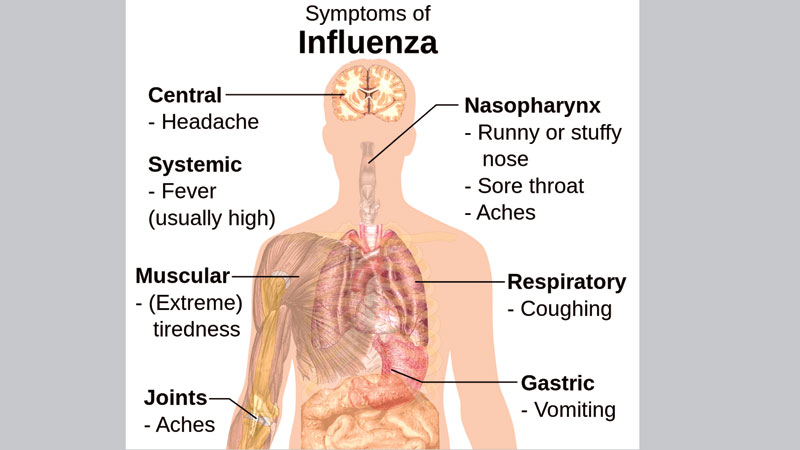 Try an over-the-counter (OTC) cough and cold medicine to treat the specific symptoms you are having. Don’t give OTC cough and cold medicines to a child younger than 4 years of age unless your child’s doctor says it’s okay.
Try an over-the-counter (OTC) cough and cold medicine to treat the specific symptoms you are having. Don’t give OTC cough and cold medicines to a child younger than 4 years of age unless your child’s doctor says it’s okay.
Diagnosis
You may be developing a viral or bacterial infection called SINUSITIS.
Self Care
Get plenty of rest and drink lots of water. Over-the-counter (OTC) pain relievers may help reduce facial pain. Holding a warm, wet towel against your face or breathing in steam through a warm cloth or towel can relieve sinus pressure and help open your sinus passages. A cool-mist humidifier may help your sinuses drain more easily.
Contact your doctor if your symptoms last longer than 10 days or if your symptoms start to get better but then suddenly get worse again. Severe cases of sinusitis caused by bacteria may require an antibiotic.
Self Care
For more information, please talk to your doctor.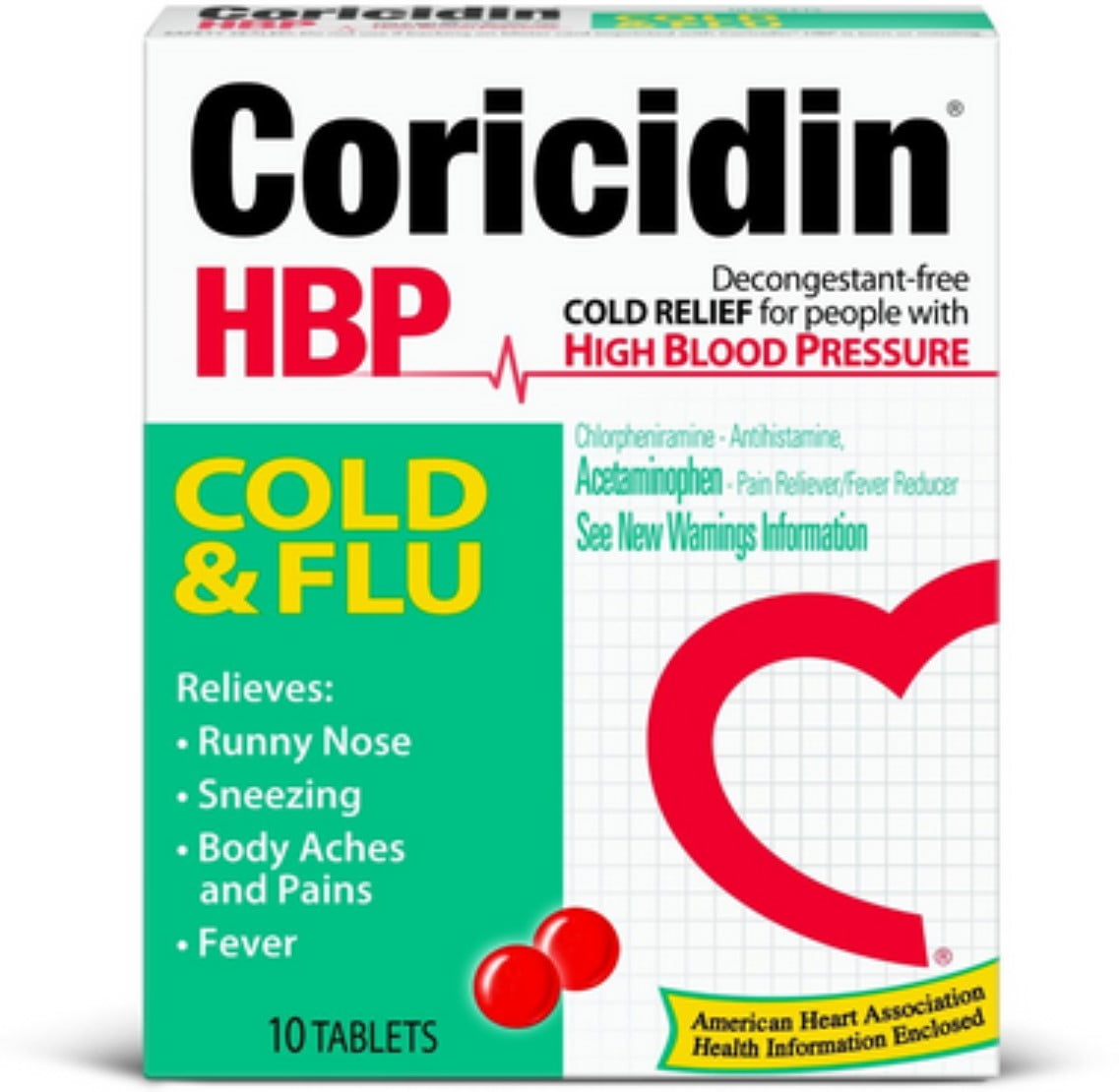 If you think your problem is serious, call right away.
If you think your problem is serious, call right away.
WARNING: Due to the risk of Reye’s syndrome, don’t give aspirin to children without your doctor’s approval.
Cold, flu or coronavirus: which is it?
Updated 22 October 2021
We explain the symptoms of coronavirus, cold and flu, and how to tell the difference.
What’s on this page
We’re here for you with information and support around coronavirus
Our fortnightly Heart Matters newsletter includes the latest updates about coronavirus when you have a heart condition, as well as support for healthy eating, staying active and your emotional wellbeing.
I’d like to sign-up
Will flu season be worse this year?
The NHS has warned about a possible double whammy of flu and Covid-19 this winter. As well as continuing coronavirus cases, we know that flu tends to surge in winter, because we spend more time indoors and because the flu virus is more stable at colder temperatures.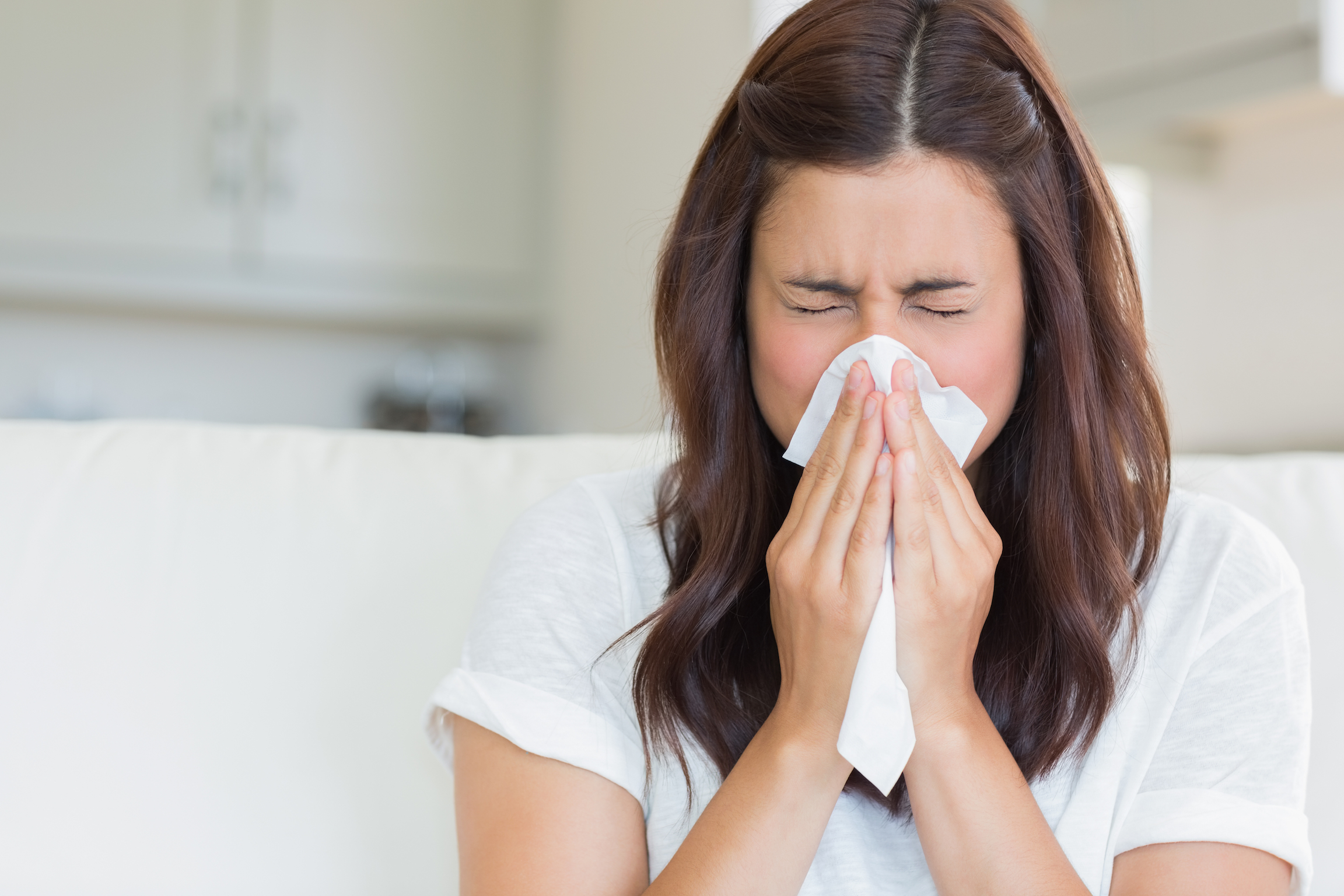
Our immunity against flu may be lower than usual this year. This is because lockdown and social distancing measures that were in place to protect people from coronavirus meant there were very low levels of flu last year, so we won’t have built any immunity against it last winter.
Flu and coronavirus can both lead to serious illness or death, and if you have a heart or circulatory condition, you’re at a higher risk. There is evidence that getting flu and coronavirus at the same time can make you even more unwell, with a higher risk of death, so it’s really important to protect yourself from both. If you are eligible, having both your flu jab and your Covid-19 booster vaccine is the best thing you can do to protect yourself throughout winter.
What are the differences between coronavirus, the flu, and a cold?
Each of these illnesses are caused by different viruses, but unfortunately, they can have similar symptoms. In particular, as we have learned more about different symptoms and different strains of Covid-19 have arisen, it’s become harder to tell the difference between Covid-19, colds and flu.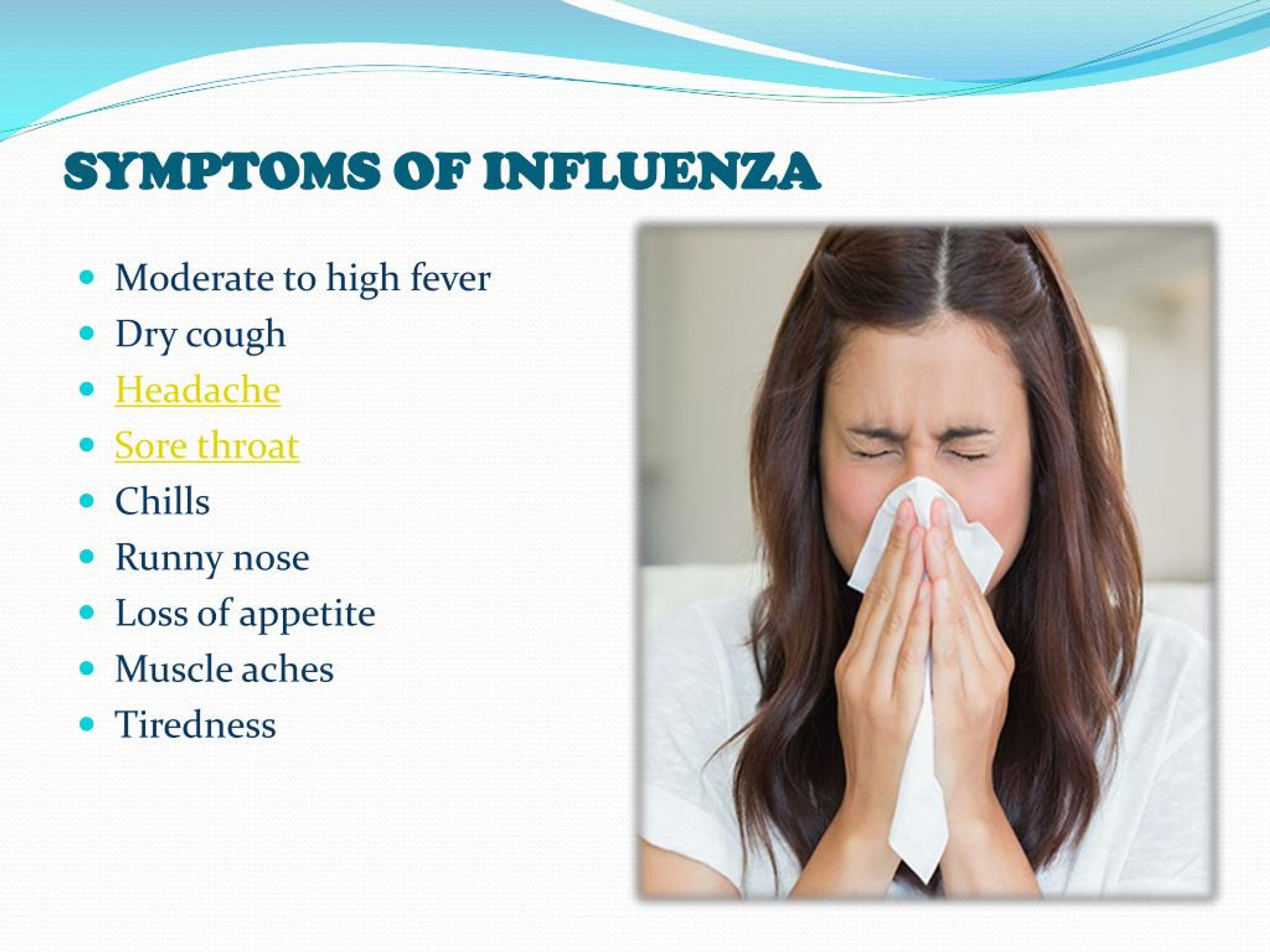
- Covid-19 is a respiratory illness caused by the strain of coronavirus that first emerged in December 2019 in Wuhan, China. This strain of coronavirus hadn’t been seen in humans before – it emerged in December 2019 in Wuhan, China.
- Influenza (flu) is also a respiratory illness that affects your lungs, but flu is caused by a different kind of virus, instead of a coronavirus. Flu can be dangerous, which is why those with underlying medical conditions like heart disease or diabetes are offered a flu jab at this time of year.
- Colds are caused by many different viruses, but most commonly a rhinovirus or a coronavirus. A cold only affects your upper respiratory tract (your nose and throat), not your lungs. Because of this a cold is often referred to as a “head cold”. Colds usually aren’t serious.
Coronavirus symptoms vs cold
Some of the “classic” symptoms of coronavirus are less common for a cold – like a high temperature, or a loss of sense of taste or smell.
However, there is evidence that the Delta variant (the most dominant strain in the UK) has symptoms that are more similar to a cold, especially for those who have been fully vaccinated. Symptoms such as a headache, a sore throat or a runny nose can be symptoms of the Delta variant, or a cold.
- If you experience any of these symptoms you should self-isolate and get a PCR test.
Coronavirus symptoms vs flu
It’s not easy to tell the difference between Covid-19 and the flu.
The flu has many symptoms in common with coronavirus, such as a headache, sore throat, fever, cough, a runny nose and shortness of breath.
However, it’s unusual for the flu to cause a loss or change to your sense of taste and smell, which can happen with Covid-19.
- If you feel like you have the flu or experience a fever, a new continuous cough, or a change to your sense of taste or smell, you should self-isolate and get a PCR test.
What are the symptoms of coronavirus? Have they changed?
Recent studies show the symptoms of coronavirus may be changing over time.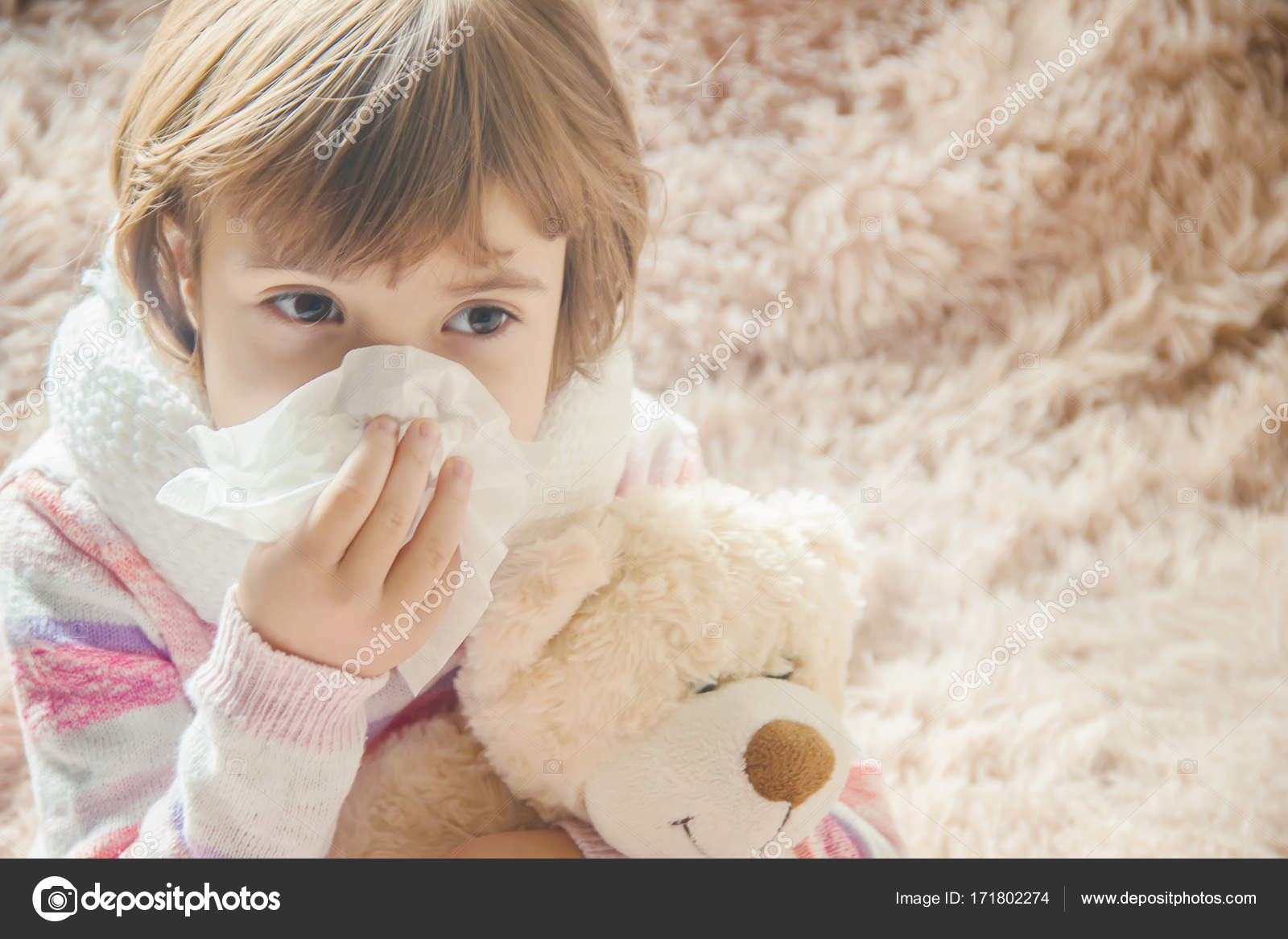
According to the NHS, the three main symptoms of coronavirus are a high temperature, a new and continuous cough, and a loss or change to your sense of smell or taste. While these “classic” symptoms were common for the initial Covid-19 variants, they are no longer the full picture, or the most commonly reported symptoms.
Recent findings from the ZOE COVID Study show that the Delta variant has different top symptoms, such as a headache, a runny nose and a sore throat. Their research also suggests that your symptoms can vary depending on whether you’ve had the vaccine or not.
The main Covid-19 symptoms if you are fully vaccinated
While you are much less likely to catch Covid-19 if you are fully vaccinated, it is still possible. If you do catch it, you’re much less likely to become seriously ill.
According to the ZOE study, the top five symptoms being reported by people who have had two doses of the vaccine are:
- a headache
- a runny nose
- sneezing
- a sore throat
- a loss or change to sense of smell
This research suggests those who have had one or two doses of the vaccine are more likely to report sneezing as a symptom, compared to those who are not vaccinated.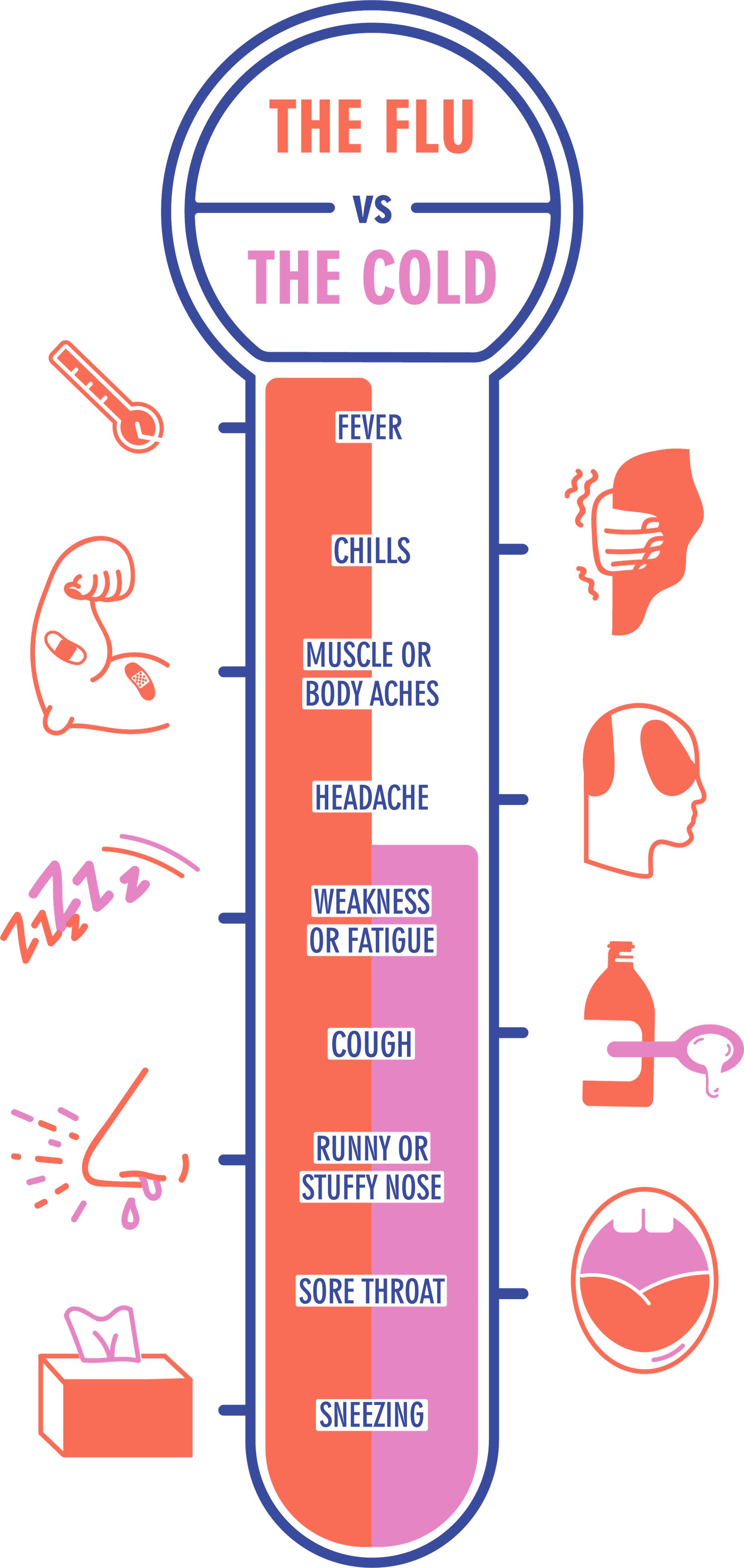
And while a new, continuous cough can be a symptom of the Delta variant, it’s not as common as it is for the Alpha variant, and research suggests it’s not as common in those who have been vaccinated.
The main Covid-19 symptoms if you are not fully vaccinated
The most reported symptoms by those who haven’t had the vaccine are:
- a headache
- a runny nose
- a sore throat
- fever
- a persistent cough
If you haven’t been vaccinated, you’re much more likely to get Covid-19, and much more likely to get seriously ill if you get it. With cases rising fast in the UK, it’s important to get vaccinated, and to get your booster if you’re offered it.
Is a runny nose a symptom of coronavirus?
Yes. According to the ZOE study, a runny nose is one of the top four symptoms of the Delta variant (B.1.617.2), whether you’ve been vaccinated or not. A runny nose is also a common symptom of a cold and can be a symptom of the flu too.
If you have a runny nose, the safest thing to do is to get a coronavirus test.
Can coronavirus start with having the flu or a cold?
You can’t catch coronavirus from a cold or flu, but the symptoms can be similar.
If you’re experiencing any of the classic coronavirus symptoms or any of the cold-like coronavirus symptoms listed above, it’s important you book a coronavirus test and self-isolate while you wait for your results.
How long do coronavirus symptoms take to appear?
On average, it takes 5 days for coronavirus symptoms to appear, but can take up to 10 days.
What do I do if I have coronavirus symptoms?
If you feel like you have a cold or have a high temperature, a new continuous cough, or a loss of taste or smell, book a coronavirus test and self-isolate while you wait for your results.
When to get medical help
If you have an existing health condition and develop coronavirus symptoms, it’s important to let your GP know immediately, or call NHS 111.
If your condition worsens, including severe shortness of breath, pain in your chest, blue lips or face, confusion, inability to stay awake, or coughing up blood, it’s essential you call 999 and seek emergency medical help.
What are the symptoms of flu?
Flu symptoms tend to come on very suddenly, and make you feel too ill to carry out normal activities. They commonly last 5-7 days.
Usual flu symptoms include:
- a sudden high temperature of 38C or above
- an aching body
- feeling tired or exhausted
- a dry cough
- a headache
Sometimes flu symptoms include:
- runny nose
- sore throat
- difficulty sleeping
- loss of appetite
- diarrhoea or tummy pain
- feeling sick and being sick
Not typically a symptom of the flu:
Remember: There are some similarities between the symptoms of coronavirus and flu, like fevers and a continuous cough. It’s important you book a coronavirus test if you experience one of these symptoms.
It’s important you book a coronavirus test if you experience one of these symptoms.
What do I do if I have flu symptoms?
You don’t need to isolate if you have flu symptoms, but try to limit your contact with people, especially those who are vulnerable.
Get plenty of rest and try to keep warm. You might also find that drinking lots of water and taking paracetamol might help you feel better. If you’ve had a heart attack, you shouldn’t take ibuprofen.
A pharmacy should be your first point of call if you want to get help or advice for flu, but try to phone or contact them online instead of going in person. A pharmacist will able to give you advice and recommend the best medicine for you.
However, you should contact NHS 111 immediately if you have flu symptoms and you:
- have heart, lung, kidney or neurological disease
- have diabetes
- are pregnant
- are over 65
- you have a weakened immune system
- have been experiencing symptoms for more than 7 days
If you suddenly develop chest pain, begin coughing up blood or have difficulty breathing, phone 999.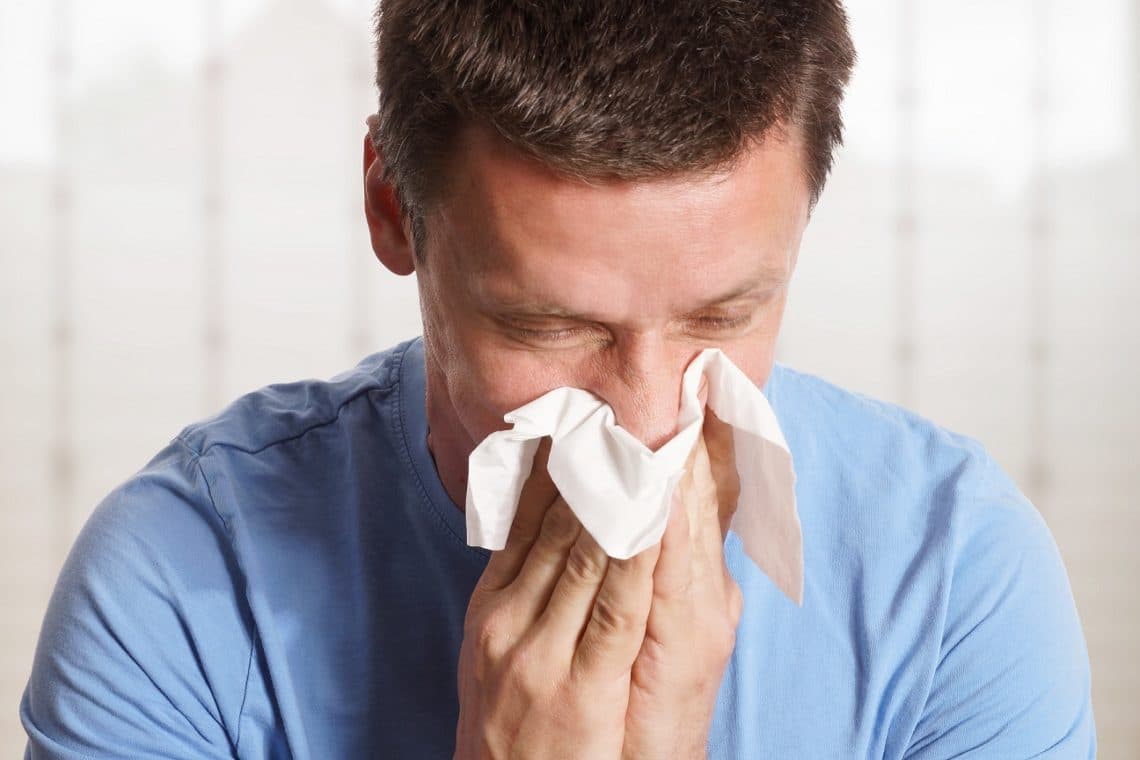
What are the symptoms of the common cold?
Cold and flu symptoms are similar, but cold symptoms are less severe. Cold symptoms also appear gradually, unlike flu symptoms which come on very quickly. Most adults recover from a cold in around 7-10 days, but symptoms can persist for up to three weeks.
Usual cold symptoms include:
- sneezing
- muscle aches
- a blocked or runny nose
- a sore throat
Sometimes cold symptoms include:
- headaches
- coughs
- a raised temperature
- pressure in your ears and face
- a loss of taste and smell
Not typically symptoms of a cold:
- diarrhoea
- shortness of breath
Remember: There are some crossover symptoms between the common cold and coronavirus. If you experience a fever, a new unexplained cough, or a loss of taste and smell, it’s important that you arrange a free coronavirus test.
What to read next…
Self-care for the flu – Mayo Clinic
What can I do at home to recover from the flu?
Answer From Pritish K. Tosh, M.D.
Flu symptoms generally begin about one or two days after your exposure to the virus and may seem to hit you suddenly. Among healthy people, flu symptoms vary in severity. Signs and symptoms range from a sore throat and runny nose to fever, chills and muscle aches. Flu symptoms can generally be treated at home with supportive care.
Flu symptoms can make you feel awful. But if you’re otherwise healthy, younger than age 65, and not pregnant, you can generally take care of yourself at home rather than going to your doctor. Try these remedies:
- Take acetaminophen (Tylenol, others) or ibuprofen (Advil, Motrin IB, others) to reduce fever and muscle aches. Don’t give products containing aspirin to children or teens recovering from chickenpox or flu-like symptoms. This is because aspirin has been linked to Reye’s syndrome, a rare but potentially life-threatening condition, in such children.

- Drink clear fluids, such as water, broth or sports drinks.
- Rest as needed or change some of your activities, depending on your symptoms.
To avoid infecting other people, stay home from work, school and other public places for at least 24 hours after your fever is gone without the use of fever-reducing medications. Most people feel better within a week of becoming infected with the flu virus. However, coughing may last for another one or two weeks.
With
Pritish K. Tosh, M.D.
Get the latest health advice from Mayo Clinic delivered
to your inbox.
Sign up for free, and stay up-to-date on research
advancements, health tips and current health topics,
like COVID-19, plus expert advice on managing your health.
Learn more about our use of data
To provide you with the most relevant and helpful information and to understand which
information
is beneficial, we may combine your e-mail and website usage information with other
information we have about you.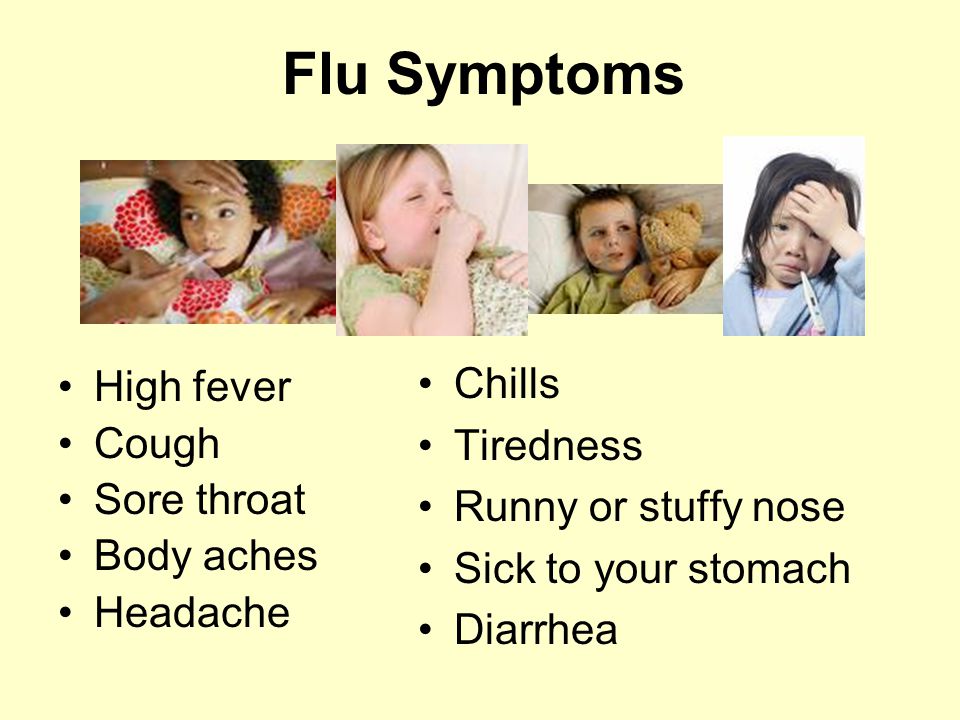 If you are a Mayo Clinic Patient,
If you are a Mayo Clinic Patient,
this could include Protected Health Information (PHI). If we combine this information
with your PHI, we will treat all of that information as PHI,
and will only use or disclose that information as set forth in our notice of privacy
practices. You may opt-out of e-mail communications
at any time by clicking on the Unsubscribe link in the e-mail.
Subscribe!
Thank you for Subscribing
Our Housecall e-newsletter will keep you up-to-date
on the latest health information.
We’re sorry! Our system isn’t working. Please try again.
Something went wrong on our side, please try again.
Please try again
- Flu vaccine: Safe for people with egg allergy?
- Flu and pregnancy
Aug. 28, 2021
Show references
- Flu symptoms & complications.
 Centers for Disease Control and Prevention. https://www.cdc.gov/flu/symptoms/symptoms.htm. Accessed May 10, 2021.
Centers for Disease Control and Prevention. https://www.cdc.gov/flu/symptoms/symptoms.htm. Accessed May 10, 2021. - Flu: What to do if sick. Centers for Disease Control and Prevention. https://www.cdc.gov/flu/treatment/takingcare.htm. Accessed May 10, 2021.
- Jameson JL, et al., eds. Influenza. In: Harrison’s Principles of Internal Medicine. 20th ed. McGraw Hill; 2018. https://accessmedicine.mhmedical.com. Accessed May 10, 2021.
- Treatment of seasonal influenza in adults. https://www.uptodate.com/contents/search. Accessed May 10, 2021.
- AskMayoExpert. Influenza. Mayo Clinic; 2020.
- AAP Committee on Infectious Diseases. Recommendations for prevention and control of influenza in children, 2017-2018. Pediatrics. 2017; doi:10.1542/peds.2017-2550.
- Sullivan JE, et al. Clinical report — Fever and antipyretic use in children. Pediatrics. 2011; doi:10.1542/peds.2010-3852. Reaffirmed July 2016.
- Labeling of drug preparations containing salicylates.
 Electronic Code of Federal Regulations. https://www.ecfr.gov/cgi-bin/text-idx?SID=76be002fc0488562bf61609b21a6b11e&mc=true&node=se21.4.201_1314&rgn=div8. Accessed Feb. 22, 2018.
Electronic Code of Federal Regulations. https://www.ecfr.gov/cgi-bin/text-idx?SID=76be002fc0488562bf61609b21a6b11e&mc=true&node=se21.4.201_1314&rgn=div8. Accessed Feb. 22, 2018. - Renaud DL (expert opinion). Mayo Clinic. Feb. 27, 2018.
See more Expert Answers
.
90,000 signs, symptoms, treatment and prevention
Influenza is a severe viral infection that affects men, women and children of all ages and nationalities. Flu epidemics occur every year, usually during the colder months of the year. In terms of the number of cases in the world, influenza and ARVI rank first, the share in the structure of infectious diseases reaches 95%.
Influenza and SARS, gradually undermining health, reduce the average life expectancy of a person by several years.In a severe course of influenza, irreversible damage to the cardiovascular system, respiratory organs, central nervous system often occurs, provoking diseases of the heart and blood vessels, pneumonia, tracheobronchitis, meningoencephalitis.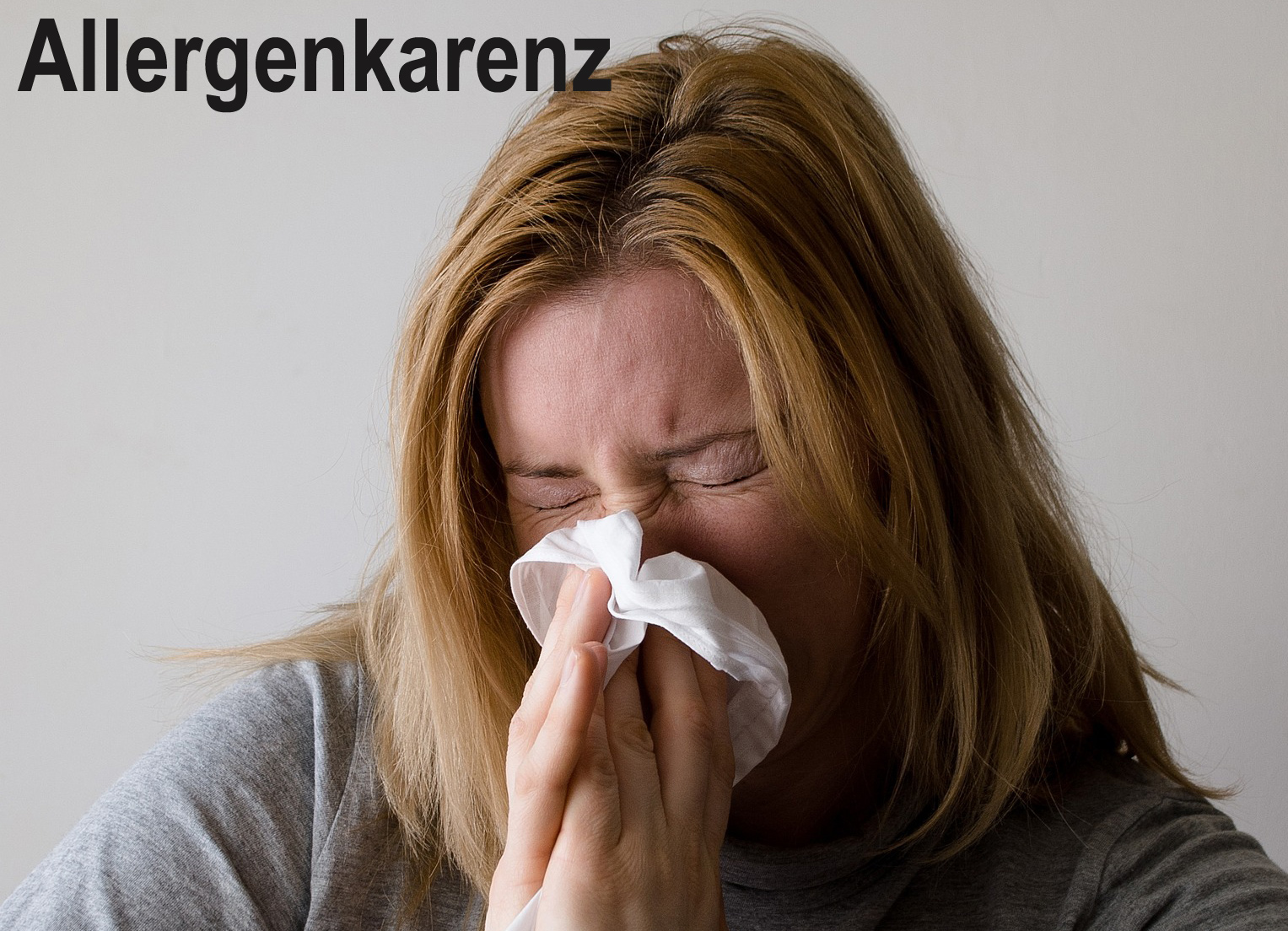
The greatest victims of influenza are among the elderly population groups suffering from chronic diseases.
The flu virus is very easily transmitted:
- The most common route of transmission is through airborne droplets.
- A household transmission route is also possible, for example, through household items.
When coughing, sneezing, talking from the nasopharynx of a patient or a virus carrier, particles of saliva, mucus, sputum with pathogenic microflora, including influenza viruses, are thrown out. An infected area with a maximum concentration of aerosol particles is formed around the patient. Their dispersion range usually does not exceed 2 – 3 m.
What is ARVI? What is the difference from the flu?
The term “acute respiratory disease” (ARI) or “acute respiratory viral infection” (ARVI) covers a large number of diseases, in many ways similar to each other.Their main similarity lies in the transmission path (they enter the body together with the inhaled air through the mouth and nasopharynx) and in the set of symptoms:
- The patient has a fever, sore throat, cough, chills, muscle pain and headache for several days.

- The most common symptom of respiratory illness is a runny nose; it is caused by a number of related viruses known as rhinoviruses.
Upon recovery, all these symptoms disappear and do not leave any traces behind.
Basically, pathogens of acute respiratory infections are transmitted from person to person through the cough or sneezing of the patient. Anyone who comes into close contact (approximately 1 meter) with another person with ARVI symptoms is at risk of exposure to potentially infectious inhaled droplets. Viruses can enter the body (eyes, nose, or mouth) through the hands when they come into contact with an infected surface.
Good personal hygiene can help prevent the spread of respiratory pathogens.
| Flu signs and symptoms | Signs and symptoms of SARS |
|
|
Differences between coronavirus COVID-19, colds and flu
As you know, the new coronavirus infection COVID-19 is transmitted mainly by airborne droplets. She is characterized by the presence of clinical symptoms of acute respiratory viral infections (you can find a detailed educational program from Sevzdrav at the link – https://sevdz.ru/mednavigator/profilaktika/koronavirus/).
She is characterized by the presence of clinical symptoms of acute respiratory viral infections (you can find a detailed educational program from Sevzdrav at the link – https://sevdz.ru/mednavigator/profilaktika/koronavirus/).
Important! COVID-19 is sometimes asymptomatic, but this does not make the carrier of the virus less infectious. Especially in such cases, people with chronic diseases suffer.
Visual infographics from Rospotrebnadzor:
Basic recommendations for the prevention of influenza and ARVI for the population
Prevention measures are especially important to observe now – during a pandemic of a new coronavirus infection.
The self-isolation regime has been canceled, but the pandemic has not disappeared anywhere! We all need to think about our health and the health of the people around us.
- Avoid close contact with people who seem unhealthy, exhibit fever (fever) and cough.

- Avoid crowded places or shorten time spent in crowded places.
- Avoid touching your mouth and nose.
- Observe hand hyena – wash your hands more often with soap and water or use an alcohol-based hand sanitizer, especially if you touch your mouth or nose.
- Increase the flow of fresh air into living quarters, open windows as often as possible.
- Use masks when in contact with a sick person.
- Maintain a healthy lifestyle, including adequate sleep, eating “healthy” foods, and being physically active.
Preventive immunization of the population (vaccination) is the best prevention of influenza. In turn, the main danger of refusing to vaccinate is the possibility of getting the flu through contact with a sick person.In addition, a person who has not been vaccinated is potentially dangerous to others, as he is a likely carrier of an infectious disease.
In detail: why vaccination is needed and where to get a flu shot in Sevastopol.
Recommendations for persons with ARVI symptoms
- If you feel unwell, stay at home and follow the doctor’s recommendations, if possible, keep at a distance from healthy people (1 meter).
- Rest and drink plenty of fluids.
- Cover your mouth and nose when coughing or sneezing with a handkerchief or other suitable material. Dispose of this material immediately after use or wash it. Wash your hands immediately after contact with respiratory secretions!
- A mask must be worn if you are in the common area of the house near other people.
- Tell your family and friends about the illness.
Important! Medical masks
Recommendations for the use of protective medical masks:
- The wearing of medical masks is mandatory for those who have close contact with a sick patient.
- Carefully wear the mask so that it covers your mouth and nose, and tie it tightly so that there are as few gaps between the face and the mask as possible.

- When using the mask, be careful not to touch it.
- When touching a used mask, for example when removing it, wash your hands with soap and water or using an alcohol-based hand sanitizer.
- Replace the used mask with a new clean, dry mask as soon as the used mask becomes damp (damp).
- Do not reuse disposable masks.
- Throw away disposable masks after each use and dispose of them immediately after removal.
Recommendations for patient care at home
- Isolate the patient from others, at least 1 meter away from others.
- Cover your mouth and nose when treating patients with masks.
- Wash hands thoroughly with soap and water after each contact with a sick person. Allocate separate towels for each family member.
- In addition to the caregiver, the patient should not be visited by other visitors.

- Whenever possible, only one adult should be in the home to care for the sick.
- Avoid being cared for by a pregnant woman.
- Ventilate the patient’s room at all times.
- Keep the area clean using detergents.
Advice for parents of sick children
- Seek medical attention from a doctor if your child is ill.
- Leave the sick child at home unless he or she needs medical attention.
- Give your child plenty of fluids (juice, water).
- Create a comfortable environment for your child, peace is essential.
- If your child has a fever, sore throat, and body aches, you can give him antipyretic medications that the doctor prescribes for the age of the patient.
- Keep tissues and waste basket within reach of the patient.
- Teach children to wash their hands frequently with soap and water for 20 seconds. Parents should also follow this procedure, which will serve as a good example for the children.

- Teach children to cough and sneeze into a tissue or hand.Parents should also follow this procedure, which will serve as a good example for the children.
- Teach children not to come closer than one and a half to two meters to sick people.
- Children who are ill should stay at home (not attending preschool and schools) and keep their distance from other people until their condition improves.
- Refrain from frequent visits to crowded places.
- If your child has had contact with someone with the flu, ask your doctor for antiviral medication to prevent illness.
/upload/iblock/8fb/8fb3203939955ff7f105f494ffa830a6.png PHP code “data-counter>
REMINDER FOR THE POPULATION ON PREVENTION AND TREATMENT OF ARVI and INFLUENZA A (H1N1)
REMINDER FOR THE POPULATION ON PREVENTION AND TREATMENT OF ARVI and INFLUENZA A (H1N1)
REMINDER FOR THE POPULATION ON PREVENTION AND TREATMENT OF ARVI and INFLUENZA A (H1N1).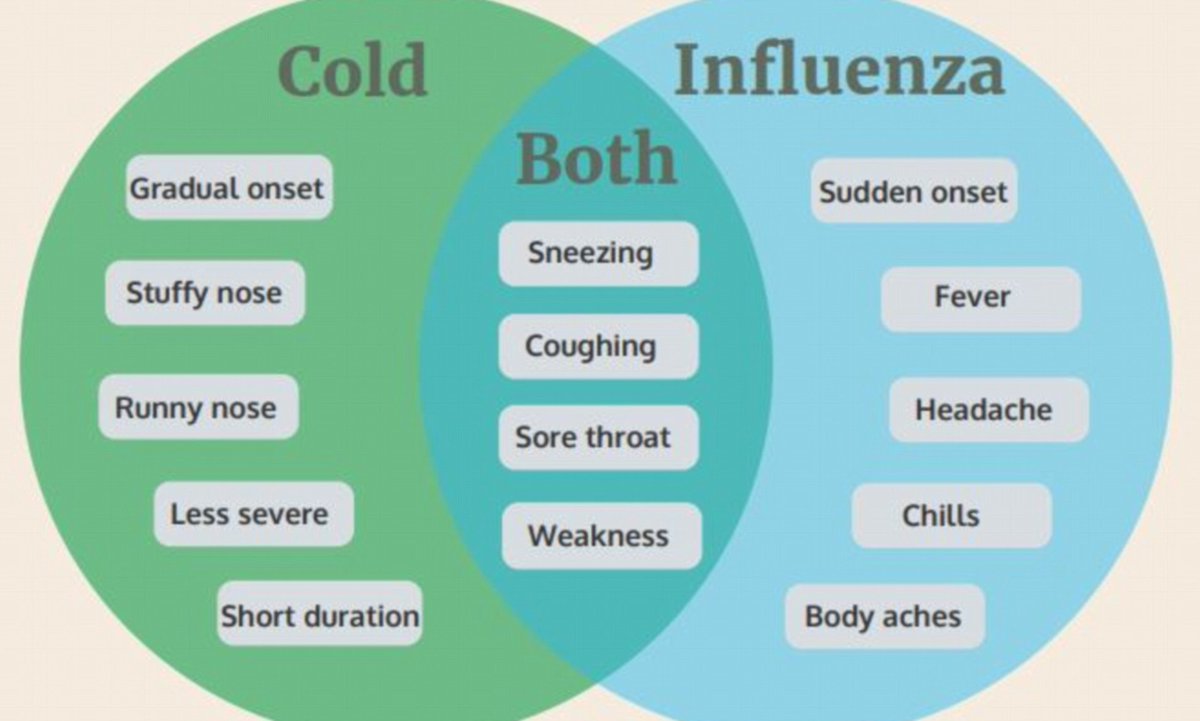 WHAT TO DO IF YOU HAVE SYMPTOMS OF AN INFLUENZA-LIKE DISEASE
WHAT TO DO IF YOU HAVE SYMPTOMS OF AN INFLUENZA-LIKE DISEASE
Symptoms of influenza A (h2N1) virus in humans are similar to those of seasonal flu and include: fever, cough, sore throat, runny or nasal congestion, body aches, headache , chills, weakness, loss of appetite. A significant number of people infected with the virus also have diarrhea (loose stools) and vomiting.
At the above clinic, YOU SHOULD BE AWARE OF THE FOLLOWING SYMPTOMS:
- Difficulty breathing or feeling short of breath.
- Pain or a feeling of heaviness in the chest or abdomen.
- body aches,
- sudden dizziness.
- confusion.
- severe or persistent vomiting.
- if symptoms subside but then recur with fever and increased cough.
If these alarming symptoms appear, you should immediately seek medical attention .
PEOPLE AT HIGH RISK OF SEVERE FLU:
- pregnant women,
- children under 5 years old,
- people of any age with chronic diseases (such as asthma, diabetes, heart disease),
- persons with reduced immunity (for example, persons taking immunosuppressive (steroids, cytostatics) drugs, HIV-infected).
90,012 persons 65 years of age and older,
PROTECT YOURSELF, YOUR FAMILY AND SOCIETY
Sick people can be contagious from 1 day of illness to 7 days after the onset of the disease. Children, especially young children, can remain infectious for a longer period of time.
- Cover your mouth and nose with a handkerchief (tissue) when you sneeze or cough. Throw the handkerchief (napkin) into the trash can after use.
- Wash your hands often with soap and water, especially after covering your mouth and nose when sneezing or coughing.Alcohol-based hand cleaners are also effective.

- Avoid touching your eyes, nose and mouth with your hands. It is in this way that microbes spread.
- Try to avoid close contact with sick people.
- Clean hard surfaces such as door handles with household disinfectants.
If you get sick, you can get sick for a week or more. You should stay at home and avoid contact with other people so as not to infect them, unless you need urgent medical attention.
Your doctor will determine the amount of necessary tests for influenza and determine the tactics of treatment, including whether you need to take symptomatic and antiviral drugs
TREATMENT
It is known that most people can get mild influenza and are able to recover without medical attention. If you are sick, you should:
- Observe bed or semi-bed rest; hygiene rules: frequent hand washing with soap, “cough etiquette”: cover your mouth and nose when coughing and sneezing with a napkin and then dispose of it, regularly ventilate the room.

- Abundant drink (boiled water, slightly mineralized mineral water, cranberry and lingonberry fruit drinks, unsweetened tea with lemon).
- You can use the following medicines before the doctor’s appointment:
- Vasoconstrictor nasal drops to facilitate nasal breathing as needed;
- Antipyretic and pain relievers , indicated for temperatures above 38.5 ° C and pain symptoms, taking into account the individual tolerance of specific drugs.The greatest evidence for efficacy and safety is for paracetamol and ibuprofen, including in children. Paracetamol is also the most preferred drug for treating fever in pregnant women. A single dose of paracetamol (acetaminophen) for adults is 500 mg, the frequency is up to 4 times a day. Ibuprofen is taken 400 mg 3-4 times a day by mouth after meals. The use of salicylates should be avoided under the age of 18 because of the possible risk of side effects.
Instruction for the population on the prevention of influenza
The influenza virus, including type A (h2N1), is easily transmitted from person to person and causes respiratory diseases of varying severity. Symptoms are similar to those of regular (seasonal) flu. The severity of the disease depends on a number of factors, including the general condition of the body and age.
Symptoms are similar to those of regular (seasonal) flu. The severity of the disease depends on a number of factors, including the general condition of the body and age.
Prone to disease: the elderly, young children, pregnant women and people suffering from chronic diseases (asthma, diabetes, cardiovascular diseases, obesity, neurological diseases) and with weakened immunity.
RULE 1. WASH HANDS
Wash your hands often with soap and water.
Clean and disinfect surfaces using household detergents.
Hand hygiene is an important measure to prevent the spread of influenza. Washing with soap removes and kills germs. If it is not possible to wash your hands with soap, use alcohol or disinfectant wipes.
Cleaning and regular disinfection of surfaces (tables, doorknobs, chairs, etc.)) removes and destroys the virus.
RULE 2. OBSERVE DISTANCE AND RESPIRATORY LABEL
Avoid close contact with sick people. Maintain a distance of at least 2 meters from patients.
Maintain a distance of at least 2 meters from patients.
Avoid travel and crowded places.
Avoid touching your eyes, nose, or mouth with your hands. The influenza virus is spread by these routes.
Don’t spit in public.
Wear a face mask or other available protective equipment to reduce your risk of illness.
The virus is easily transmitted from a sick person to a healthy person by airborne droplets (when sneezing, coughing), therefore, it is necessary to maintain a distance of at least 2 meters from patients. When coughing, sneezing, cover your mouth and nose with disposable tissues, which should be thrown away after use. By avoiding unnecessary visits to crowded places, we reduce the risk of illness.
RULE 3. LEAD A HEALTHY LIFESTYLE
A healthy lifestyle increases the body’s resistance to infection.Maintain a healthy schedule, including adequate sleep, eating foods rich in protein, vitamins and minerals, and being physically active.
WHAT ARE THE SYMPTOMS OF FLU?
Most common flu symptoms:
• high body temperature (97%),
• cough (94%),
• runny nose (59%),
• sore throat (50%),
• headache (47%),
• rapid breathing (41%),
• muscle pain (35%),
• conjunctivitis (9%).
In some cases, symptoms of gastrointestinal disorders (which are not typical for seasonal flu) were observed: nausea, vomiting (18%), diarrhea (12%).
Complications of influenza:
A characteristic feature of influenza, primarily A (H1N1) 2009, is the early appearance of complications. If with seasonal flu complications occur, as a rule, 5-7 days or later, then with influenza A (H1N1) 2009 complications can develop as early as 2-3 days of illness.
Primary viral pneumonia is the leading complication.Deterioration in viral pneumonia is rapid, and many patients develop respiratory failure within 24 hours, requiring immediate respiratory support with mechanical ventilation.
Prompt treatment can help alleviate the severity of the disease.
WHAT TO DO IN CASE OF INFLUENZA?
Stay home and see your doctor urgently.
Follow your doctor’s orders, stay in bed and drink as much fluids as possible.
Avoid crowded places. Wear a hygienic mask to reduce the risk of spreading infection.
Cover your mouth and nose with a tissue when you sneeze or cough. Wash your hands with soap and water as often as possible.
WHAT TO DO IF SOMEONE GETS INFLUENZA IN THE FAMILY?
Give the patient a separate room in the house. If this is not possible, keep a distance of at least 2 meters from the patient.
Limit to a minimum contact between sick and loved ones, especially children, the elderly and people with chronic diseases.
Ventilate the area frequently.
Keep clean and wash and disinfect surfaces with household detergents as often as possible.
Wash your hands often with soap and water.
When caring for a sick person, cover your mouth and nose with a mask or other protective equipment (handkerchief, scarf, etc.).
Only one family member should take care of the sick person.
90,000 Sore throat with ARVI and ARI
10/28/2021
51 171
17 minutes
Contents:
Even those who boast good health know about the symptoms of ARI and ARVI firsthand …According to statistics, during epidemics, these inflammatory diseases of the respiratory tract are transmitted by 20% of the population of Russia, and during pandemics every second 1 suffers from them. What is the difference between diagnoses and treatment in each of these cases – in the article.
The abbreviation “ARI” stands for acute respiratory disease, ARVI is an acute respiratory viral infection. In both cases, the inflammatory process begins to develop in the upper respiratory tract and can spread lower: into the trachea and bronchi, causing tracheitis and bronchitis, into the bronchioles (the smallest bronchi), provoking bronchiolitis, and into the lung tissue, leading to pneumonia 2 .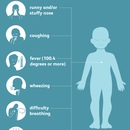 At the same time, pneumonia, unlike bronchitis and bronchiolitis, is never classified as an acute respiratory disease – it is considered a separate pathology 1 .
At the same time, pneumonia, unlike bronchitis and bronchiolitis, is never classified as an acute respiratory disease – it is considered a separate pathology 1 .
Up to content
What is the difference between acute respiratory infections and acute respiratory infections
The diagnosis of “acute respiratory disease” implies damage to the respiratory tract with a wide range of pathogens. Therefore, doctors put it mainly when it is impossible to find out what caused the disease – viruses, bacteria, protozoa or fungi 1 .Microbes can enter from the outside with the inhaled air or after contact with contaminated surfaces. Sometimes the cause of the disease is the representatives of the microflora, which are constantly found in the respiratory tract and usually do not cause any health problems 1 . Hypothermia, excessive physical exertion, stress and diseases that weaken the immune system create conditions for the activation of these microorganisms, which leads to illness 1 .
Depending on the localization of the inflammatory process, the diagnosis is supplemented with the name of a specific disease.If the pathogen has struck the nasal cavity and pharynx, the term “nasopharyngitis” appears in the diagnosis, when the tonsils are affected – “tonsillitis”, and if the larynx – “laryngitis”. When the inflammation descends into the trachea and bronchi, we are talking about tracheitis and bronchitis 2 .
Viral colds account for up to 90% of all acute inflammations of the respiratory tract 1 .
Unlike ARI, ARVI is always a disease that develops after contact with a sick person or the mucus of his respiratory tract, which usually contains pathogens.This diagnosis is made during epidemics, when the viral nature of the common cold is most likely, as well as with laboratory confirmation of the pathogen.
Up to content
Causes of respiratory diseases
As mentioned above, they can be various microorganisms.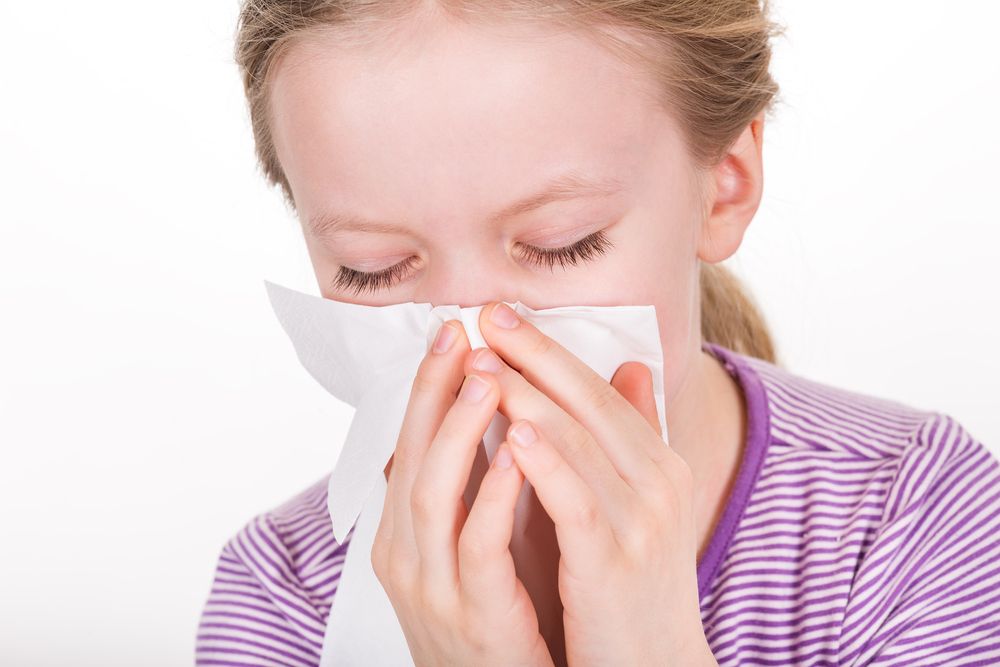
1. Bacteria
Bacteria act as pathogens only in 5% of cases 1 . Most often they are:
- mycoplasmas and chlamydia – intracellular parasites, which are associated with 25% of bronchitis and every fifth pneumonia 1 ;
- pneumococci causing pneumonia 1 ;
- Haemophilus influenzae;
- streptococci, dangerous from the point of view of autoimmune complications, such as rheumatism and other rheumatic diseases 1 .
Bacterial infections can be primary, but in most cases they develop as complications of ARVI. In the treatment of acute respiratory infections and viral-bacterial inflammation, doctors use antibiotics.
2. Viruses
More than 200 pathogens are known that can infect the respiratory tract 1 . The most common of them are:
- influenza viruses,
- parainfluenza viruses,
- adenoviruses,
- rhinoviruses,
- RS viruses (respiratory syncytial).
The most severe course of the common cold is associated with the influenza virus, adeno and RS viruses 1 .
The source of danger is a sick person. During sneezing and coughing, phlegm, containing a huge amount of microbes, is in the air and on surrounding objects. Infection occurs by inhalation of air containing tiny droplets of mucus, but more often – during contact with contaminated surfaces. To bring the pathogens into the body, a healthy person just needs to hold onto the handrail in the transport, which was touched by the patient’s hands soiled with sputum, and then rub his nose.
Adenoviruses and enteroviruses are infected through shared dishes, contaminated water, when contaminated food is consumed 1 .
Up to contents
Signs of ARVI and ARI
Fever, weakness, runny nose, sore throat and sore throat, coughing are often present in both bacterial and viral inflammations. This is due to the defeat of the same parts of the respiratory tract. And yet, some features, determined by the type of pathogen, exist.
Influenza
The most severe course is influenza, which is most often sick in winter 1 . The incubation period is from 2-3 hours to 2-3 days 1 . The disease begins acutely with fever, chills, weakness, aching muscles and joints, photophobia, hypersensitivity to sounds, and headache. On days 2-3, symptoms of respiratory tract damage are added to the manifestations of intoxication: perspiration and sore throat, dry hacking cough 1 . Small children may experience vomiting and loose stools.In about 20-30% of cases, influenza is complicated by bacterial inflammation of the bronchi – bronchitis 1 . In 2-5% of patients, viral and viral-bacterial pneumonia develops 1 . Within 1-2 months after recovery, many report weakness, decreased exercise tolerance, mood swings, which are associated with post-viral asthenia 1 .
Parainfluenza
Parainfluenza season – autumn-winter. The disease develops gradually. 2-7 days after infection, the temperature rises (above 38 0 C), signs of moderate intoxication appear: weakness, lethargy, headache and body aches 1 .The defeat of the pharynx is accompanied by slight reddening of its mucous membrane and coughing. The acute period lasts 1-3 days, after which the temperature drops, and the symptoms subside 1 . In the case of a severe course and with activation of the bacterial microflora, the inflammatory process can spread to the larynx, causing the development of laryngitis 1 with its characteristic hoarseness, dry barking cough and shortness of breath. As a complication, bronchitis and pneumonia can occur.
Adenovirus infection
It usually occurs in autumn and winter. The incubation period of ARVI / ARI lasts up to 14 days 1 . The onset of the disease is gradual. Fever reaches 38 0 C and is accompanied by severe intoxication lasting up to 10 days 1 . The favorite places of the adenovirus are the tonsils, pharynx and trachea, which is manifested by the development of angina and pharyngotracheitis. A moist cough, red enlarged glands, enlarged submandibular lymph nodes and conjunctivitis are the most common signs of adenoviral colds 1 .
Respiratory syncytial infection
The RS virus is especially active in winter and spring 1 . After 3-6 days after infection, the temperature rises and slight weakness appears, which persist for 3-7 days 1 . Sometimes the disease proceeds at all against the background of a normal temperature, and its only manifestation is general malaise and cough – at first dry, then – with difficult to separate thick sputum, accompanied by attacks of shortness of breath and suffocation. In this case, the pharynx is practically not affected, and sore throats develop extremely rarely 1 .
Rhinovirus infection
Like other colds, it is more common in autumn and winter 1 . It starts with a slight rise in temperature and malaise. The main “marker” of this ARVI / ARI is a runny nose, or rather rhinorrhea 1 , accompanied by sneezing, discharge of a large amount of liquid foamy mucus from the nasal passages, lacrimation and redness of the eyes. Pharyngitis is rare. As complications, sinusitis and otitis media can develop.
Bacterial ARI
The duration of viral inflammation usually does not exceed 10-14 days.However, damage to the respiratory mucosa and a weakening of the body’s immune defenses contribute to the development of pathogenic bacteria. As a result, colds are complicated by purulent sinusitis, otitis media, bronchitis and pneumonia.
The first sign of complications is the absence of positive dynamics and the appearance of symptoms such as a second wave of fever, sweating, purulent nasal discharge and the same sputum, shortness of breath and asthma attacks on the background of ARI / ARVI treatment 1 .
Up to content
Diagnostics
Treatment of viral and bacterial respiratory diseases has fundamental differences.Therefore, the main goal of the doctor at the diagnostic stage is to distinguish the banal ARVI, that is, the common cold, from the flu and ARI caused by bacteria, protozoa or fungi 1.2 . In most cases, there are enough symptoms and knowledge of the epidemiological situation – which infection is most common at the moment.
Taking into account the fact that colds are more often mild 1.2 , an exact determination of the type of pathogen is not required. In difficult and unusual situations, laboratory research is carried out.This is especially true for babies under one year old, pregnant women and patients with heart, pulmonary insufficiency and diabetes mellitus and other serious ailments 1 . The examination includes virological diagnostics and bacteriological analysis to determine the sensitivity of the pathogen to antibiotics 2 .
Up to contents
Treatment of acute respiratory infections and acute respiratory viral infections in adults
Treatment includes the creation of a special regimen, dietary nutrition, general and local therapy 2 .
- Mode
During a fever, bed rest is necessary, when the temperature decreases and the state of health improves, home mode and restriction of physical activity are sufficient.
- Nutrition
The diet should be gentle so as not to overload the digestive system. It is recommended to avoid fried, fatty, spicy, salty and sweet foods. Do not get carried away with raw vegetables and fruits – it is better to use them boiled and stewed.Meat should be limited and partially replaced with fermented milk products and eggs.
- Drinking regime
During a fever, at least 30 ml of liquid per 1 kg of body weight should be consumed in order to avoid dehydration, help keep the mucous membranes of the respiratory tract moist, relieve symptoms their irritation and sputum discharge 3 . You can drink plain water and add a teaspoon of lemon juice to it.Useful berry fruit drinks, fruit compotes without sugar, rosehip decoction. The main thing is that they are warm.
- Nasal lavage
Since colds are more often accompanied by rhinitis, nasal lavages with saline or seawater-based pharmaceuticals 3 are helpful. They help to free the nose from dried mucus, restore the work of the ciliated epithelium, which is responsible for the natural cleansing of the nasal cavity 3 .
- Gargling
To relieve symptoms of pharyngitis and tonsillitis accompanying respiratory diseases, gargle with saline solutions or special preparations with antiseptic and anti-inflammatory effects 3 .Soda-salt solution can be prepared independently by taking 1 teaspoon of table salt and soda and dissolving them in 250 ml of warm water. Salt and baking soda provide antimicrobial effect, reduce swelling of the pharyngeal mucosa and thus relieve discomfort in it 4 . Infusions of herbs, for example, chamomile, sage, calendula, are also suitable. To prepare them, you need to insist 25 g of grass for 15 minutes in 250 ml of hot water.
For acute respiratory infections and acute respiratory viral infections, HEXORAL ® 5 solution can be used as a head rinse.The advantage of local antiseptics over general antibiotic therapy is that they do not affect the body as a whole, do not have systemic side effects, do not suppress beneficial microflora and do not cause the formation of antibiotic-resistant bacterial strains 1 . The broad-spectrum antiseptic hexetidine, which is part of the drug HEXORAL ® SOLUTION, acts on most bacteria, influenza A viruses and respiratory syncytial viruses that cause respiratory tract diseases 5 .Exhibiting antifungal activity, it helps to prevent the development of candidiasis against the background of general antibacterial therapy and a decrease in immunity 5 .
The mild analgesic effect of hexetidine helps to eliminate discomfort and relieve sore throat, as well as relieve cough associated with mucosal irritation 5 . The high safety profile allows the drug to be used not only in adults, but also in children from the age of three 5 .
- Irrigation of the pharynx with an antiseptic
In case of a high vomiting reflex, HEXORAL ® in the form of AEROSOL 6 may be useful.Fine spraying allows you to evenly cover the entire mucous membrane of the tonsils and pharynx with the solution.
Due to the high contagiousness (infectiousness) of viruses, several people sometimes get colds in families. In this case, it is especially convenient to use for the whole family HEXORAL ® AEROSOL, which has slightly different colored tips 6 .
- Lozenges
As an alternative to gargling, you can use the absorbable antiseptic tablets: HEXORAL ® TABS, HEXORAL ® TABS CLASSIC and 903 TABS ® EXORAL 7404 9040.The composition of the drugs includes not only antiseptics, but also local anesthetics that help fight sore throat 7 . Aromatic oils give the tablets a pleasant taste and aroma.
- Antibiotics and antiviral agents
Antiviral drugs are prescribed in the first days of a cold, more often with flu 1.2 . They shorten the duration of the illness and reduce the likelihood of complications 1 .
In the case of bacterial inflammation in acute respiratory viral infections and acute respiratory infections, an antibiotic is required 2 – it is prescribed by a doctor, taking into account the nature of the pathogen and its sensitivity to the main antibacterial agents.
- Symptomatic agents
Their action is aimed at combating the manifestations of the disease, such as nasal congestion, fever, body aches and others.
Antipyretic drugs | According to WHO recommendations, it is necessary to lower the temperature in adults only if it rises above 38.5 0 C 8 . If there are problems with the heart, lungs, kidneys and nervous system concomitant with the underlying disease, as well as with poor tolerance of fever, the antipyretic can be taken earlier 8 .In this case, you do not need to achieve normal temperature indicators. To feel better, it is enough to “knock down” it by 1 0 C 8 . |
Vasoconstrictor nasal drops | They help to facilitate nasal breathing, reduce the risk of developing sinusitis and other sinusitis 8 . However, the use of decongestants (as they call vasoconstrictor drops and nasal sprays) is best limited to 3-4 days 8 .This will avoid the addictive effect and the development of medication rhinitis. |
Means for combating cough | Dry cough, without sputum secretion, which usually occurs in the early days of illness, is more often associated with inflammation of the pharyngeal mucosa, therefore rinsing and irrigation of the throat, resorption tablets with antimicrobial and analgesic effect 8 . Dry painful cough with laryngitis, tracheitis, bronchitis, leading to vomiting and sleep disturbance, – an indication for the use of antitussive drugs 9 .Mucolytic and expectorant sputum thinning agents and expectorants 9 will help to ease the discharge of sputum with a wet cough. If necessary, these medications for ARVI / ARI will be prescribed by a doctor. You can independently use the raspberry-flavored syrup HEXO BRONCHO ® based on guaifenesin. This mucolytic agent has a warming and soothing effect on the pharyngeal mucosa, helps to reduce tickling and sore throat 10 . By increasing the secretion of mucus, guaifenesin dilutes the phlegm and makes it easier to pass 10 . |
Up to the table of contents
Prevention
It is impossible to completely protect yourself from pathogens. The flu shot does not protect against infection with the influenza virus, but it does reduce the likelihood of severe illness and complications. In addition, the vaccine does not work against other viruses that cause SARS.
To reduce the risk of infection:
- frequent hand washing with soap and use of antibacterial wipes;
- restriction of visits to public places during epidemics;
- moisturizing the nasal mucosa with special solutions based on sea salt;
- Maintaining cleanliness and optimal air humidity (50-70%) in the house using air humidifiers and regular wet cleaning;
- Improving immunity: hardening, vitamin prophylaxis, walking and physical education in the fresh air, gargling with cold water;
- Improving resistance to stress and avoiding excessive physical exertion;
- Nutritional value that provides the body with essential nutrients, vitamins and microelements.
Up to Table of Contents
The information in this article is for guidance only and does not replace professional medical advice. Consult a qualified professional for diagnosis and treatment.
Literature
- N.V. Orlova, T.G. Suranova. Acute respiratory diseases: features of the course, drug therapy. MEDICAL ADVICE No. 15, 2018. p. 82-88.
- Acute respiratory viral infections in adults.Clinical guidelines. Considered and recommended for approval by the Profile Commission of the Russian Ministry of Health on the specialty “infectious diseases” at a meeting on March 25, 2014 and October 8, 2014.
- Svistushkin V.M., Mustafaev D.M. Acute respiratory viral infections: principles of rational therapy. Regular issues of “RMZh” No. 26, 2014, p. 1897.
- Tel L.Z., Lysenkov S.P., Sharipova N.G., Shastun S.A. Pathophysiology and physiology in questions and answers. – 2 volume. – M .: Medical Information Agency, 2007.with. 66-75.
- Instructions for use of the drug HEXORAL ® SOLUTION.
- Instructions for use of the drug HEXORAL ® AEROSOL.
- Instructions for the use of preparations HEXORAL ® TABS, HEXORAL ® TABS CLASS, HEXORAL ® TABS EXTRA.
- V. K. Tatochenko. SARS and flu in children. The main difficulties of diagnosis and the possibilities of rational therapy. “The attending physician”, No. 9, 2015.
- Volkov A.V. Cough.Antitussive drugs. Regular issues of “RMZh” №5 from 04.03.2009. with. 368.
- Instructions for use of the drug GEXO BRONCHO ® .
Know the enemy by sight. How to distinguish coronavirus from influenza
Irina Yerofeeva
Health
September 20, 2021
With the onset of cold weather, many people, as if on command, begin to sniff, sneeze and cough.And if a couple of years ago, everyone regarded these symptoms as an inevitable evil, today any malaise is alarming. What if the new satellite of mankind is showing itself like this, the coronavirus? Doctors and specialists of Rospotrebnadzor gave a number of tips on how to distinguish COVID-19 from the usual ARVI or flu, from which, by the way, about 700 thousand people die every year in the world.
PHOTOS pixabay
According to Dmitry Lioznov, director of the Smorodintsev Influenza Research Institute, last year, in the wake of the coronavirus pandemic, there were practically no cases of influenza.And there is an explanation for this: in particular, over 70% of adult Russians managed to get a flu shot. In addition, in the country, as never before, anti-epidemic measures were strictly observed: people wore masks, washed their hands and disinfected the premises.
How the situation will develop this season, scientists cannot yet say. But it is believed that there is a possibility that the pathogen of the coronavirus will no longer be so active, after all, a significant number of Russians are immune to it.
This means that the eternal companion of mankind, the flu, can raise its head.
So how can you tell one ailment from another?
Experts remind: influenza and COVID-19 are completely different infections. Therefore, there are some differences in their symptoms.
So, when infected, the influenza virus begins to manifest itself rapidly. On average, the incubation period (the time from infection to the onset of the first symptoms) ranges from several hours to 1 – 2 days.The incubation period for COVID-19 is longer – from 4 to 14 days.
Influenza, like COVID-19, is often accompanied by body aches, increased fatigue, and intestinal upset. But with the flu, the overwhelming majority of the infected, the body temperature rises sharply to 38 – 39 degrees. With coronavirus, this indicator depends on the form of the course of the disease.
For both flu and COVID-19, coughing is a common symptom.However, its types differ. COVID-19 is always accompanied by a dry cough, while the sick person feels short of breath and difficulty breathing. Flu is characterized by a wet cough with profuse sputum as well as a dry one.
If a person only has a stuffy nose, a runny nose and a sore throat, it is more likely that he has a common cold.
You can also distinguish the coronavirus by the duration of the course of the disease.With a cold, relief comes already on the 3rd – 7th day. Influenza resolves without complications within 10 to 14 days. When infected with coronavirus, characteristic symptoms can persist for 2 to 4 weeks.
Another significant difference between the coronavirus and seasonal types of influenza is the possibility of the course of the disease in the absence of symptoms. The infected person does not experience unpleasant sensations and does not even notice that he is sick. But he remains very dangerous to those around him. The thing is that a COVID-19 patient can shed the virus 1 to 4 days before the first symptoms appear.Therefore, during this time, it can easily infect several people.
The likelihood and timing of the onset of complications, primarily pneumonia, are also different for coronavirus and influenza. Coronavirus progresses rapidly, so lung damage in severe form can occur as early as a week after infection. With seasonal flu, this complication develops somewhat later. And usually it is provoked by the addition of a bacterial infection.
At risk for COVID-19 are the elderly and people with chronic diseases.With flu, children also fall into this category (who tolerate COVID-19 relatively easily).
But what the two ailments have in common is the way of transmission of the infection – from a sick person to a healthy person, mainly by airborne droplets. That is, a person can easily pick up the disease if a patient coughs, sneezes or just talks without a mask next to him.
Vaccinations will help protect yourself from two dangerous diseases. For those who have not yet done them, Lioznov advises to first get vaccinated against coronavirus, and a month after it get vaccinated against the flu.After all, there is still time. The flu usually starts in December.
The material was published in the newspaper “St. Petersburg Vedomosti” No. 175 (7012) from 20.09.2021 under the heading “Doctor, what have I got?”
Category materials
90,000 What to do if you catch a cold ?,
December 25, 2019
In winter, low temperatures, a lack of vitamins and epidemics of viruses now and then send a person to sick leave.Any disease is stress for the body. It can lead to complications, exacerbation of chronic diseases, knocks a person out of the usual pace of life. In order not to miss the onset of a cold, you need to recognize its first manifestations in time. If you have a fever, chills, body aches or headache, you must immediately perform a number of mandatory actions.
- Keep warm
It’s cold outside, you feel your feet are cold – on your return home, warm up in a hot bath, steam your feet with a bath of dry mustard.Drink tea with raspberry jam or honey, wrap yourself in a warm sweater or robe, and avoid hypothermia so as not to aggravate the situation.
- Stay Home
If you have already noticed your first symptoms – fever in the evening, general weakness, cough, runny nose – stay at home and call a doctor. At temperatures above 38 ° C, a doctor from the district clinic should come to your house.
- Give yourself a break
Many people, especially women, feeling that they are starting to catch a cold, do stay at home, but at the same time they begin to do all those things that they did not get their hands on.An important condition for the speedy recovery of a person is proper care and a decrease in physical activity. Even if you are not experiencing a breakdown, you should not overload yourself with household chores. Do not waste the energy that will be needed to defeat the disease.
- Drink plenty of fluids
The myth that water helps treat colds and flu is just a myth. However, the body suffers from dehydration during the period of illness, and even at the initial stage of the disease, it is important to maintain the correct water balance.Try to drink clean water rather than coffee, tea, or sodas. You can add honey or lemon to the water, as well as buy a bottle of medicinal mineral water.
- Eat healthy
When the body is struggling hard not to succumb to illness, try not to overload it with fatty and heavy foods. Give preference to light soups, broths, cereals. Eat fruits and vegetables, supply yourself with vitamins to maintain immunity, drink lemon tea. And of course, do not forget about chicken soup, the beneficial properties of which are legendary without exaggeration.
- Ventilate the room
If you do not do this, your apartment will soon turn into a breeding ground for your own germs and bacteria. And this not only prevents the body from fighting the disease, but also increases the risk of infecting your household for the company. Of course, ventilate the room when leaving it so as not to worsen your condition with low temperatures – especially when it is cold outside.
- Use disposable handkerchiefs
Forget a pack or two of disposable handkerchiefs – they are not so expensive, but they will justify their benefits.After several uses, an ordinary handkerchief turns into an accumulation of microbes, and you will be tortured to wash it with a profuse runny nose. And disposable handkerchiefs are hygienic and easy to use.
- Medication Precaution
Many people tend to self-medicate. This is facilitated by the abundance of drug advertisements in the media. Noticing the symptom “like an advertising hero”, a person makes a diagnosis and rushes to the pharmacy for the advertised drug.However, the same symptom can indicate completely different diseases. For example, heartburn can be both a consequence of a banal overeating, and a symptom of diseases of the digestive system. And a cough, even with a cold, can have a different character, and therefore it is treated with different drugs. By delaying a visit to a doctor, a person aggravates his illness and poisons his body, possibly with drugs that are useless in this case. A striking example is the “fashion” for antibiotic treatment. Recall that these drugs act only on a bacterial infection and are prescribed by a doctor.If you “eat” an antibiotic for ARVI, then not only do you not get treatment, but also create conditions for the reproduction of dangerous bacteria, increasing the likelihood of complications.
Remember! A speedy recovery is facilitated by following the instructions of the doctor. Do not ignore the house call or visit to the doctor’s office.
Colds during pregnancy
Colds are common among women who are expecting a baby. The causative agent of the disease can be both hypothermia of the body and a viral infection.The greatest chance of getting sick is in the early spring and winter.
Since the immune system of even the healthiest woman is depressed during pregnancy, a woman becomes more susceptible to seasonal illnesses. In this condition, it is necessary to more closely monitor the signs of the disease, since a cold, like any other disease, can harm the development of the baby.
First symptoms of a cold
If you feel unwell, headache, constant fatigue, you should think about whether this is a cold.Usually, on the first day, the condition worsens: a runny nose, sore throat, coughing appears. Sometimes one of the symptoms may appear earlier than others. With a mild cold, the body temperature during pregnancy does not exceed 38 degrees.
The first few days a cold causes the greatest discomfort, if treatment is prescribed in a timely manner, the disease quickly recedes. In order for the treatment to be correct, you need to know whether a cold has arisen as a result of hypothermia or whether it is ARVI caused by exposure to a virus.If in doubt, it is best to consult your doctor.
Is a cold dangerous during pregnancy
Sometimes the virus is already in the woman’s body and does not manifest itself. During pregnancy, the virus wakes up and develops vigorous activity. Since it occurs most often in the first trimester, a cold can have a negative impact and cause a delay in the development of the baby’s organs.
Do not worry if you have herpes rashes on your lips. This can give the child immunity to herpes in the future, because along with the nutrients, the child receives antibodies against viruses.
Rubella can be classified as dangerous viral infectious diseases. It manifests itself as a common cold: runny nose, slight swelling of lymph nodes, cough. Then red rashes appear on the skin. Rubella is very dangerous for the fetus, since it affects it in most cases.
Even a common cold should be given special attention if you are expecting a baby. If left untreated, the disease can develop into sinusitis, pneumonia or acute bronchitis.
Dangerous for pregnant women and influenza.If it occurs, it is necessary to be observed by a specialist. Indeed, sometimes the virus has no effect on the development of the baby, and sometimes it can lead to spontaneous miscarriage. The doctor will be able to check how normal the pregnancy is. If research does not reveal pathologies, there is no cause for concern.
In the second trimester, colds are less dangerous. But unpleasant complications can still occur. A cold is insidious and no one can say how it will end: an inflammatory disease of the internal genital organs or a chronic infection.It is necessary to take timely care of maintaining immunity, to fight the first signs of the disease so that it does not affect the condition of the child and mother.
Remember that a woman’s body is able to withstand many diseases without consequences for the fetus and even a severe form of a cold should not be taken as a sentence. It all depends on the individual characteristics of the organism, genetic predisposition and health status.
Treatment of colds during pregnancy
It is most correct to entrust the treatment to your attending physician, because during pregnancy, conventional methods of treatment are not suitable.Habitual medications can be dangerous and lead to complications.
At the first sign of a cold, cancel your plans and spend a few days at home. It will be more effective – bed rest. Don’t exhaust yourself with homework and shopping.
Do not burden the body with heavy food. During this period, it is better to give preference to light, easily digestible dishes. Eliminate spicy, fatty. Stewed vegetables, diet broths, cereals and dairy products will be an excellent source of energy.Drink plenty of fluids. Water will help flush out toxins from the body. If you like onions or garlic, and you have no contraindications, you can eat a little, these vegetables will help fight the infection.
Do not use alcohol-based medicines. It is better to completely abandon antipyretic drugs, antibiotics, without the permission of a doctor.
Folk remedies: pros and cons
Many women who are expecting a baby choose folk remedies during a cold.Herbal tinctures, medicinal decoctions, compresses are used. But are all herbs safe for your baby? It should be remembered that medicinal herbs are also a medicine and, therefore, they can only be used after consulting a specialist. Some herbs can cause spontaneous miscarriage, uterine bleeding can open.
Of the safest herbs, chamomile and sage can be used. A warm decoction of these herbs can be used to gargle with a cough or perspiration. Inhalation can be done to soothe a sore throat.
Honey and other bee products can be used to treat colds. Rosehip infusion will help saturate the body with vitamin C. But do not get carried away with honey, especially in the last trimester. This is a product that can provoke further allergies in a child.
Overheating – Dangerous
Take special care when taking hot baths. Hot baths are contraindicated during pregnancy, this can lead to premature birth. For the same reason, trips to the sauna and bathhouse are prohibited.
Soaring feet is also prohibited! When warmth rushes to the legs, there is a possibility of drainage of blood from the placenta, leading to a lack of oxygen in the fetus.
If there is no fever, treat colds with warmth and dryness. You can wear a scarf, warm pajamas, and wool socks. Sleeping in this form will help get rid of a runny nose and sore throat, in case of a mild cold.
How to get rid of a cold
In case of a cold, a runny nose makes breathing difficult and causes discomfort to mother and child.Due to a runny nose, hypoxia can develop, and the body, with a lack of oxygen, also loses moisture. Therefore, during a runny nose, you need to drink a sufficient amount of water.
Do not abuse nasal drops (such as Galazolin, Naphtizin, Nazivin). Do not exceed the recommended dosages. Such drops contain vasoconstrictor drugs, their use negatively affects the blood supply to the placenta. This leads to a delay in the development of the baby. After three days of using the drop, addiction occurs, which leads to unnecessary frequent instillation of the drop.The use of drops is recommended only in cases where there is a strong discharge of mucus from the nose.
In case of nasal congestion during pregnancy, it is better to rinse the nose with a weak solution of salt (0.5 tsp per glass of water). You can use special drops based on seawater.
Cold balms and ointments can be used with caution so as not to cause an allergic reaction.
Temperature during a cold
If a cold is accompanied by a temperature of up to 38 degrees, the doctor may recommend taking antipyretics, such as paracetamol.It is not recommended to take aspirin and other medications, they have many side effects.
Prevention of colds during pregnancy
It is very important to strengthen the immune system. During pregnancy, you should give up all bad habits. Spend more time outdoors. Walking in the forest or park will help to strengthen the immune system. When walking, choose warm and comfortable clothes. In rainy and cold weather, you should not allow your feet to get wet and hypothermia.
At home, ventilate the apartment more often, wipe the dust. You can do yoga or remedial gymnastics.
Try to avoid contact with sick people, avoid poorly ventilated places. You need to be especially careful during flu epidemics.
Take special vitamins for pregnant women, try to eat more fruits and berries in summer.
90,000 How to distinguish COVID-19 from SARS and influenza? Five characteristic symptoms that you do not have a “crown”
The end of January and the beginning of February are traditionally the period of the rise in viral diseases.SARS and influenza, bronchitis and laryngitis – the coronavirus has joined these diseases typical for this season in the last two years. Despite the similarity of these diseases at the initial stage, they all have a number of differences that are noted by most doctors. How to understand which symptoms indicate COVID-19, and which ones indicate a less dangerous disease?
Snot, pain and sore throat
A large number of catarrhal phenomena – such as snot, sore throat, body aches, etc.- not very often a direct companion of the coronavirus. But they almost always accompany ARVI.
Fever and headache
A typical flu usually begins with a sharp rise in temperature to 38.5 and above and headaches. With coronavirus, the head can also hurt, but in isolated cases this is accompanied by such a strong fever.
No loss of strength, dry cough and lack of oxygen
The overwhelming majority of patients with coronavirus report a severe breakdown.With good, in general, well-being and the absence of vivid symptoms of the disease, it can be extremely difficult for them to do their usual actions – to climb stairs, to do housework. A decline in strength can also be accompanied by a flu-like condition, but with ARVI it occurs infrequently.
According to many experts, this manifestation of the disease in COVID-19 is caused by a lack of oxygen in a person’s blood. For some, this manifests itself directly – a dry, exhausting cough, shortness of breath and a desire to breathe in as much air as possible, while in others it manifests itself in a sharp decline in strength.Both are quite serious symptoms that require medical attention.
Duration of illness
The acute period of a common ARVI in a person with a normal state of immunity lasts no more than 2-3 days. A longer time of the acute phase of the disease may indicate either complications that have arisen, or about a completely different disease.
In addition, all doctors note a longer incubation period for COVID-19: ARVI 2-3 days are enough to go into the acute phase, while coronavirus may take up to 2 weeks;
Taste and smell
Some of the patients with COVID-19 noted a loss of smell and taste.This symptom accompanied even those who were sick with almost no symptoms. But at the same time, it cannot be called the only true indicator of the coronavirus. The sense of smell can also disappear against the background of sinusitis, and an acute coronavirus can develop when all receptors are working.
Despite the presence of certain typical symptoms for each of the diseases, in the vast majority of cases, a doctor’s consultation is required to make a diagnosis.


 Centers for Disease Control and Prevention. https://www.cdc.gov/flu/symptoms/symptoms.htm. Accessed May 10, 2021.
Centers for Disease Control and Prevention. https://www.cdc.gov/flu/symptoms/symptoms.htm. Accessed May 10, 2021. Electronic Code of Federal Regulations. https://www.ecfr.gov/cgi-bin/text-idx?SID=76be002fc0488562bf61609b21a6b11e&mc=true&node=se21.4.201_1314&rgn=div8. Accessed Feb. 22, 2018.
Electronic Code of Federal Regulations. https://www.ecfr.gov/cgi-bin/text-idx?SID=76be002fc0488562bf61609b21a6b11e&mc=true&node=se21.4.201_1314&rgn=div8. Accessed Feb. 22, 2018.
 5 degrees), increased sensitivity to light, aches throughout the body, as well as pain: headaches and muscle pains;
5 degrees), increased sensitivity to light, aches throughout the body, as well as pain: headaches and muscle pains;
